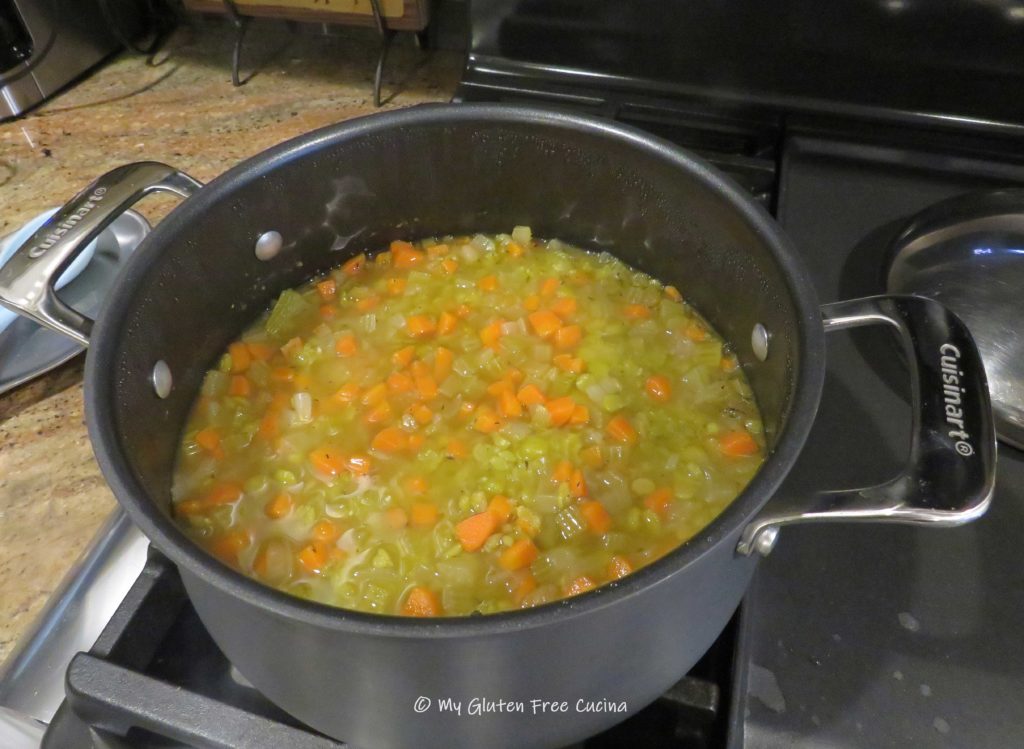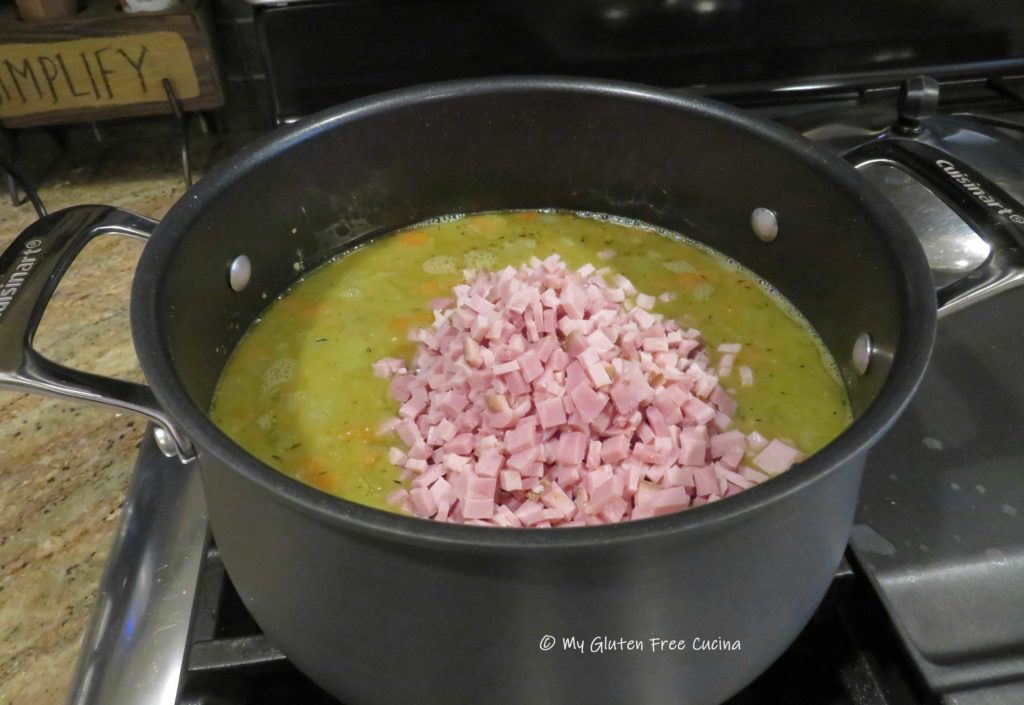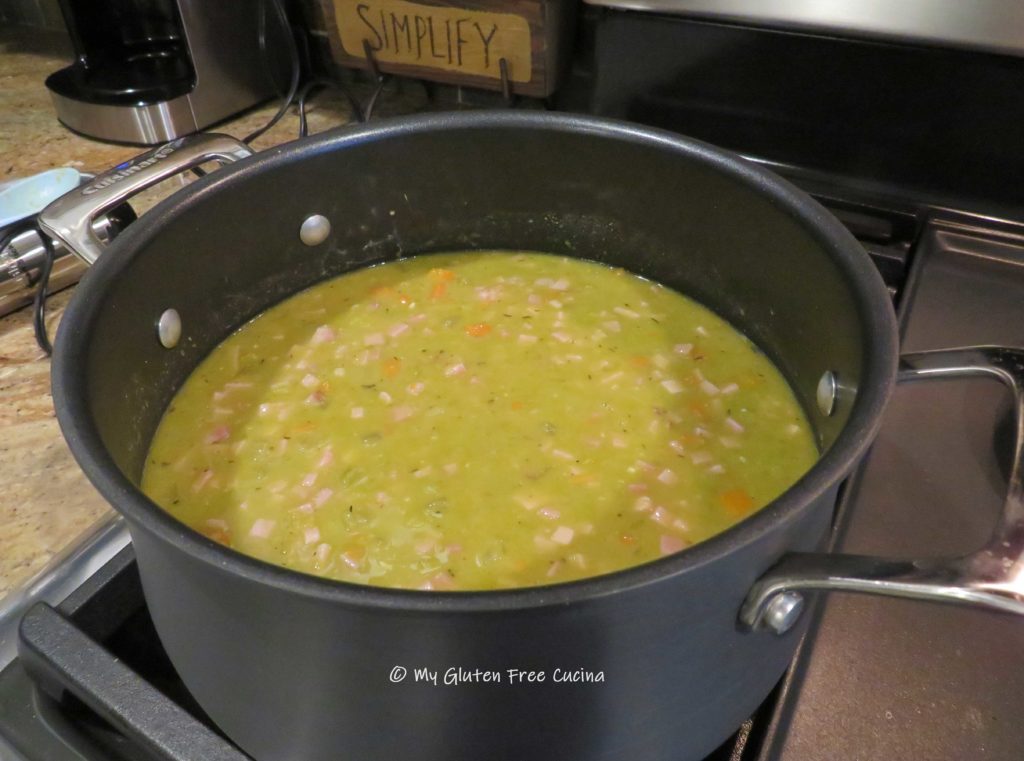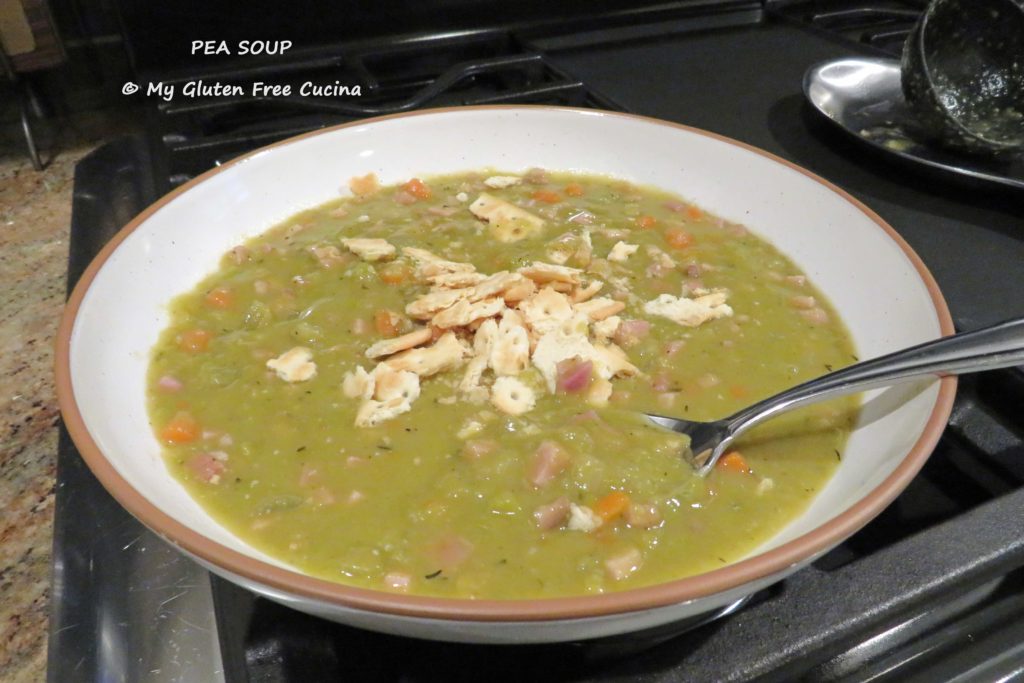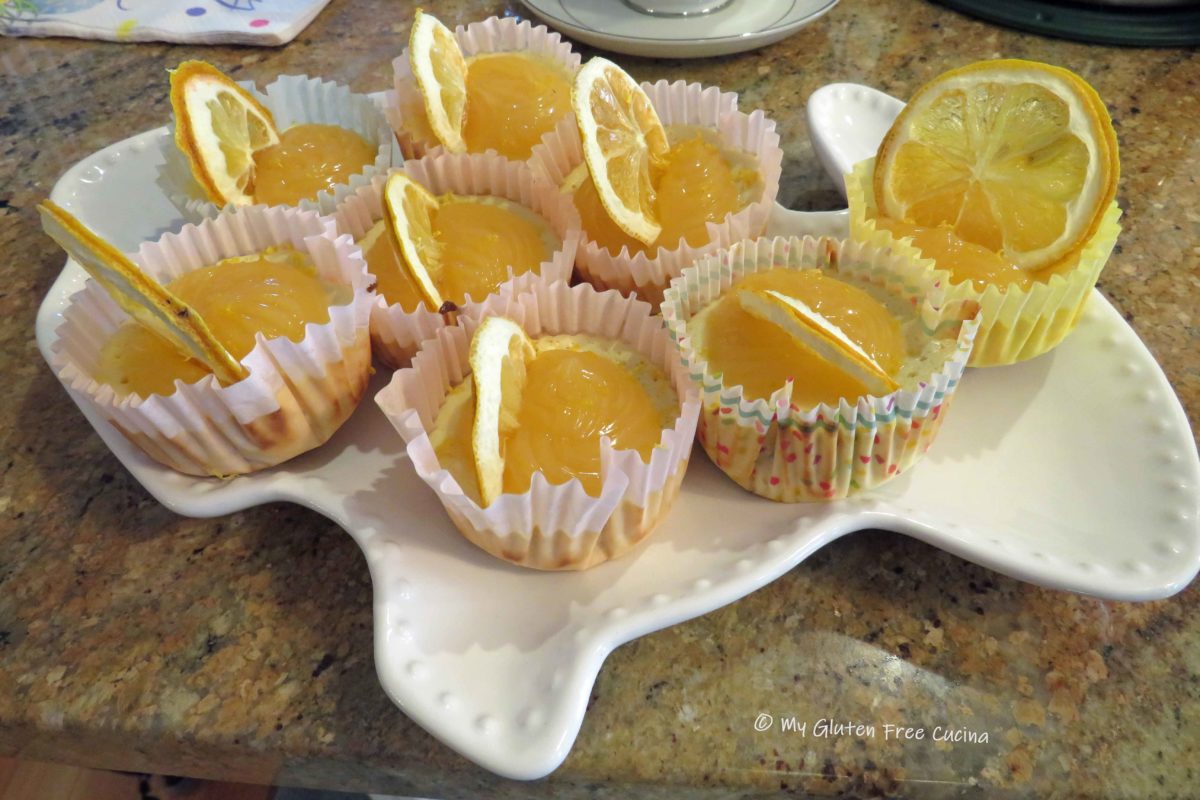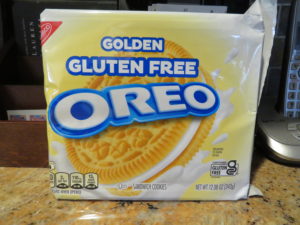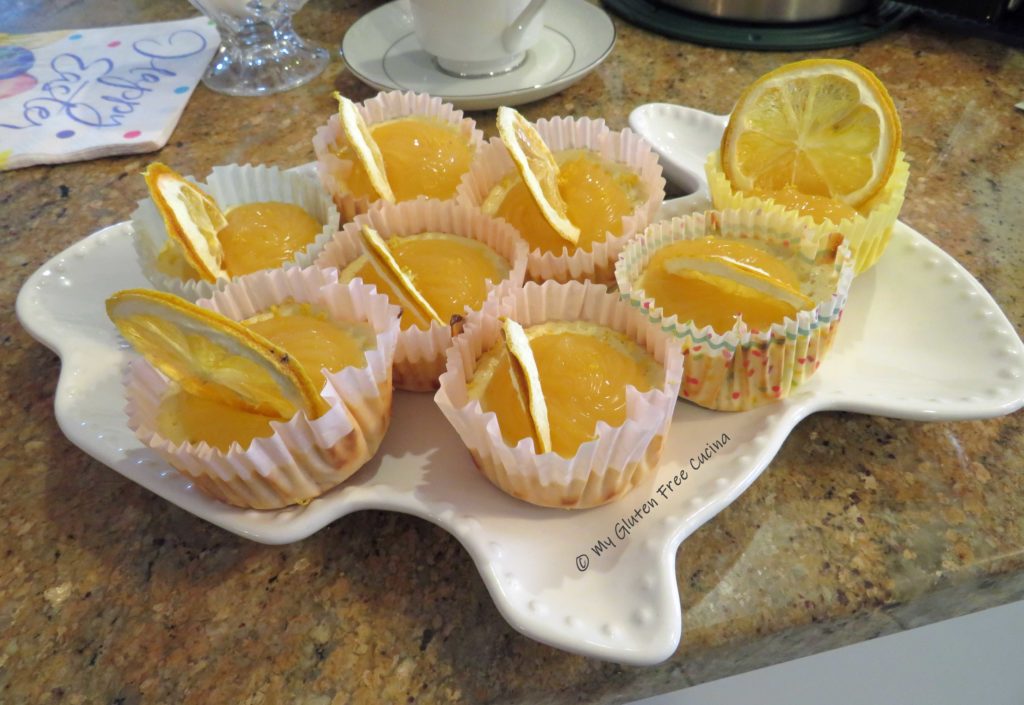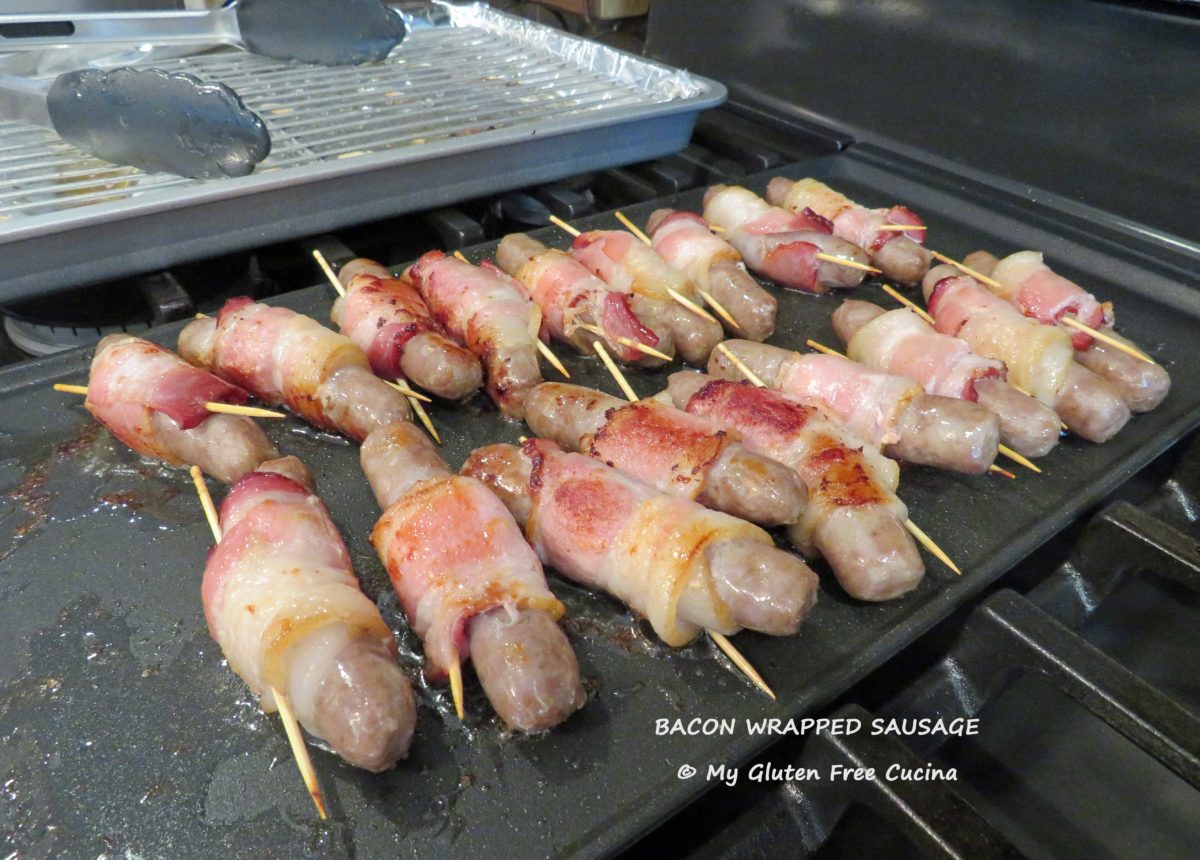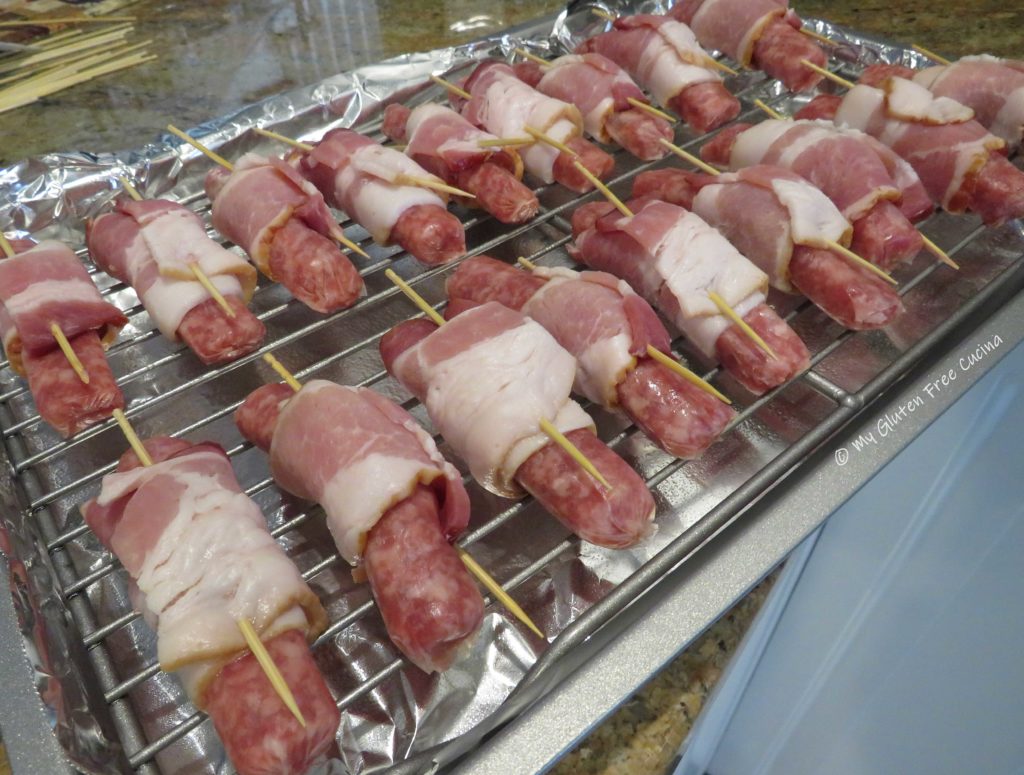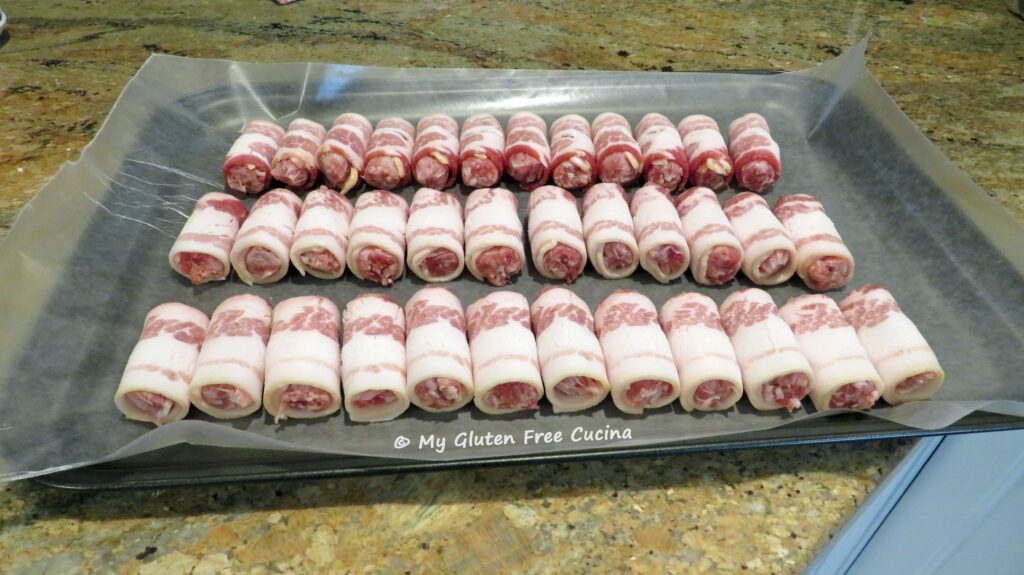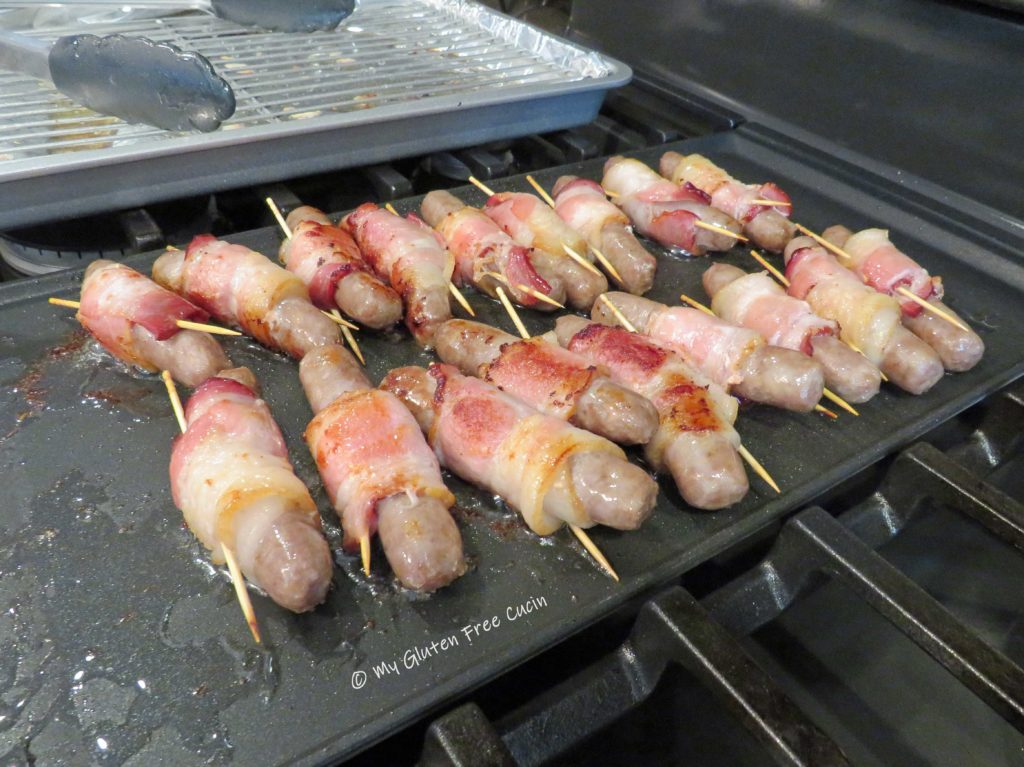Are you thinking about trying to bake gluten free sourdough bread?
There is nothing like good, homemade bread. Especially when you are gluten free, and store-bought bread leaves so much to be desired. No wonder so many of us have turned to baking our own bread at home.
This post is for all of you who have wanted to try making gluten free sourdough bread or are just looking for a solid recipe. It’s a basic loaf, with no fancy shaping or scoring. The bread is perfect for sandwiches and does not require toasting (but it’s delicious toasted as well).
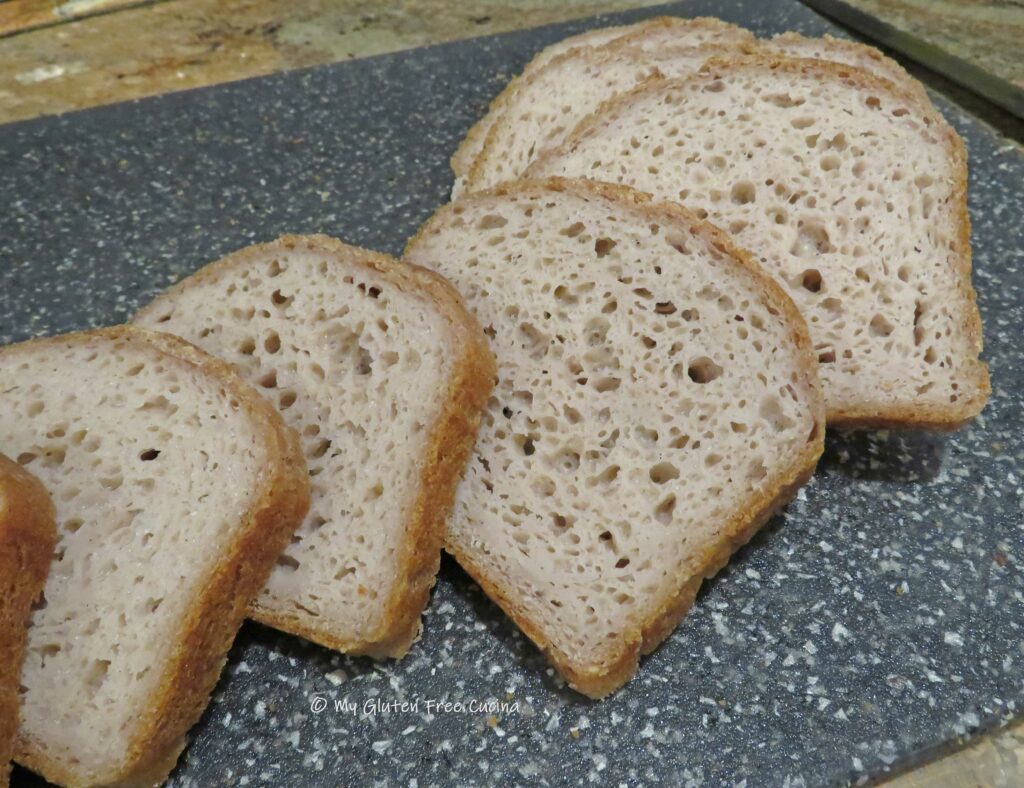
This post contains affiliate links.
I used my Gluten Free Sourdough Starter and Better Batter Artisan Flour Blend in this recipe. I baked my loaf in a small pullman loaf pan because the higher sides help the loaf to rise high and straight. You can use a standard 1-lb. loaf pan if you prefer. For best results, use a metal pan, not glass.

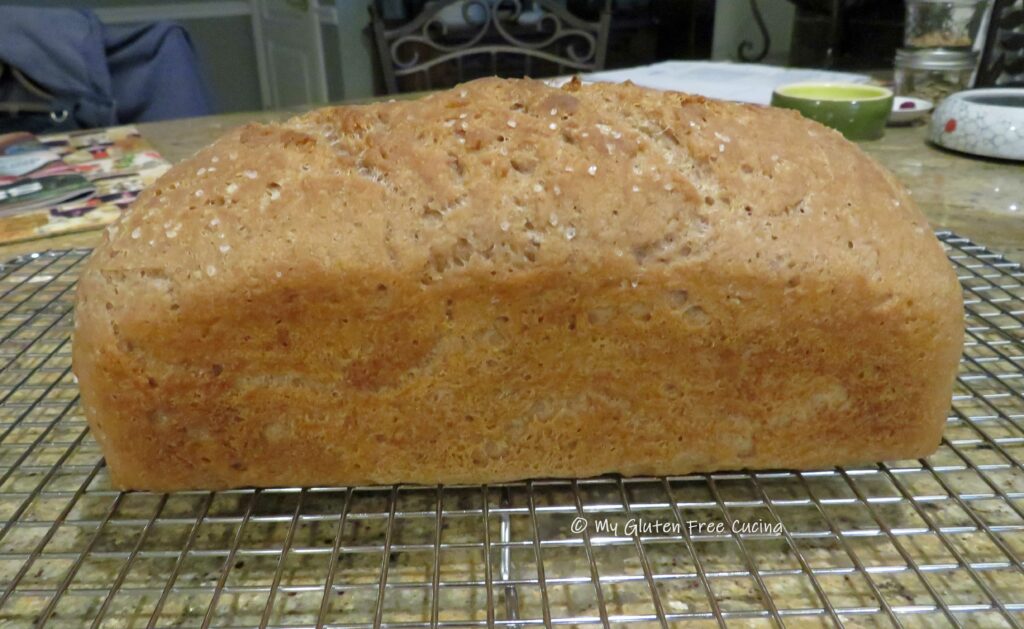
Ingredients:
Notes
♪ Although I have provided ingredient measurements by both weight and volume, I strongly recommend that you weigh your ingredients for best results!
♫ I used and highly recommend Better Batter Artisan Flour Blend for this recipe. It is a sorghum-based blend that is incredible for yeasted breads. If you use a different blend, the flour to liquid ratio may need to be adjusted and the flavor will be different.
*Get 30% off any non-sale purchase at Better Batter when you use my Promo Code MGFC30 at checkout*
Preparation:
For bread to rise properly without commercial yeast, your sourdough starter needs to be fully activated before mixing your dough (otherwise you will end up with a brick). I find that my gluten free starter doesn’t jump out of the jar like a wheat sourdough, but when fully active it does increase in size and has hundreds of tiny bubbles, especially when I give it a stir.
When I am planning to bake, I take my starter out of the refrigerator 2 days before, feed twice daily and keep it in a proofing box at 78º.
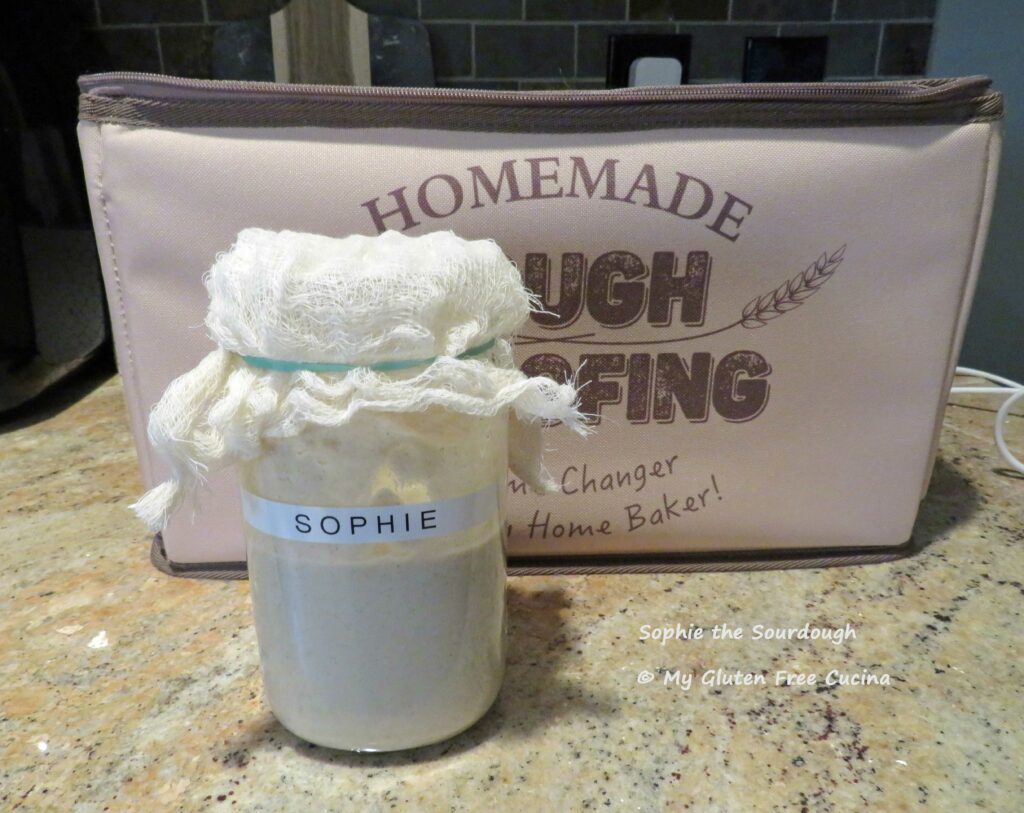
(Read more about how I made my Gluten Free Sourdough Starter here.)
The day before baking, combine all of the dough ingredients in a stand mixer with the paddle attachment. Increase the speed and mix for 5 minutes.
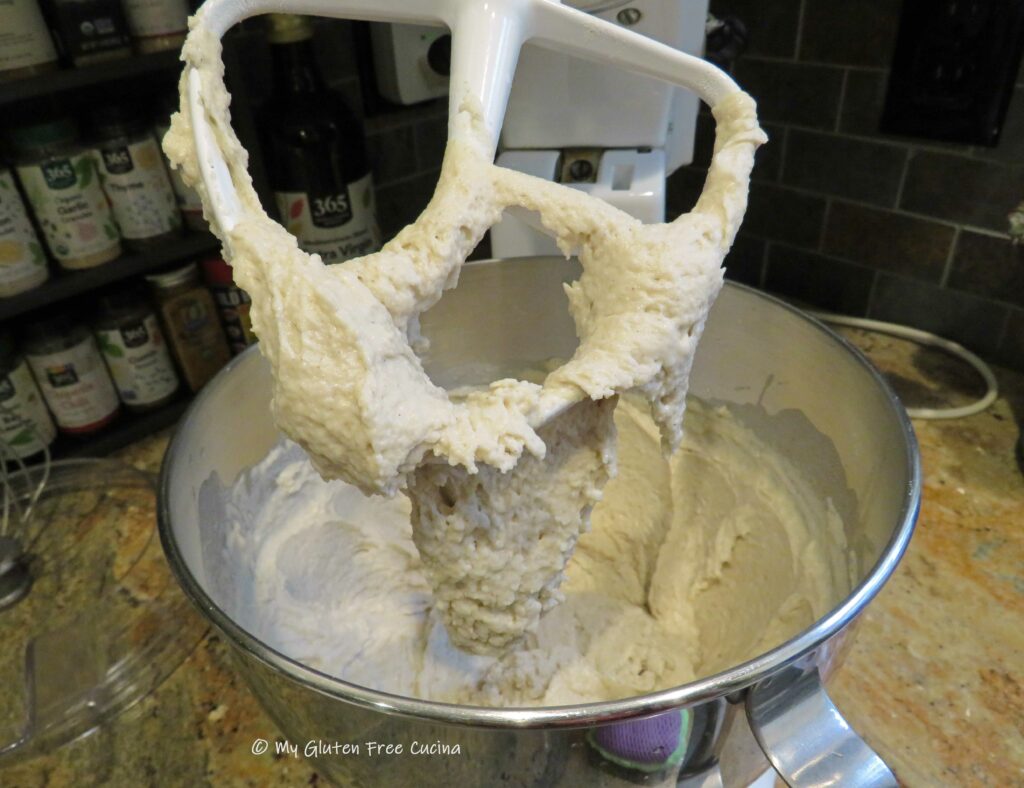
Transfer the dough to an oiled bowl, cover and place it in a proofing box (or warm, draft free area) for 4 hours. I try to time this step for late afternoon, so that it’s ready to go into the refrigerator overnight by around 8pm.
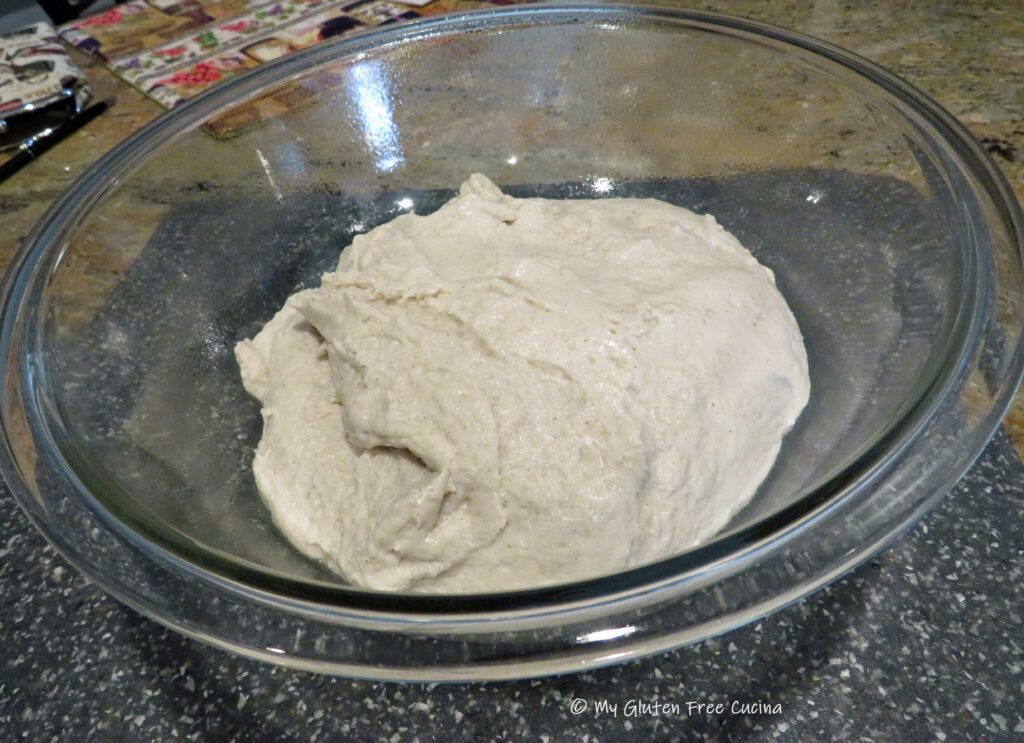
Here’s the dough after 4 hours, going into the refrigerator.
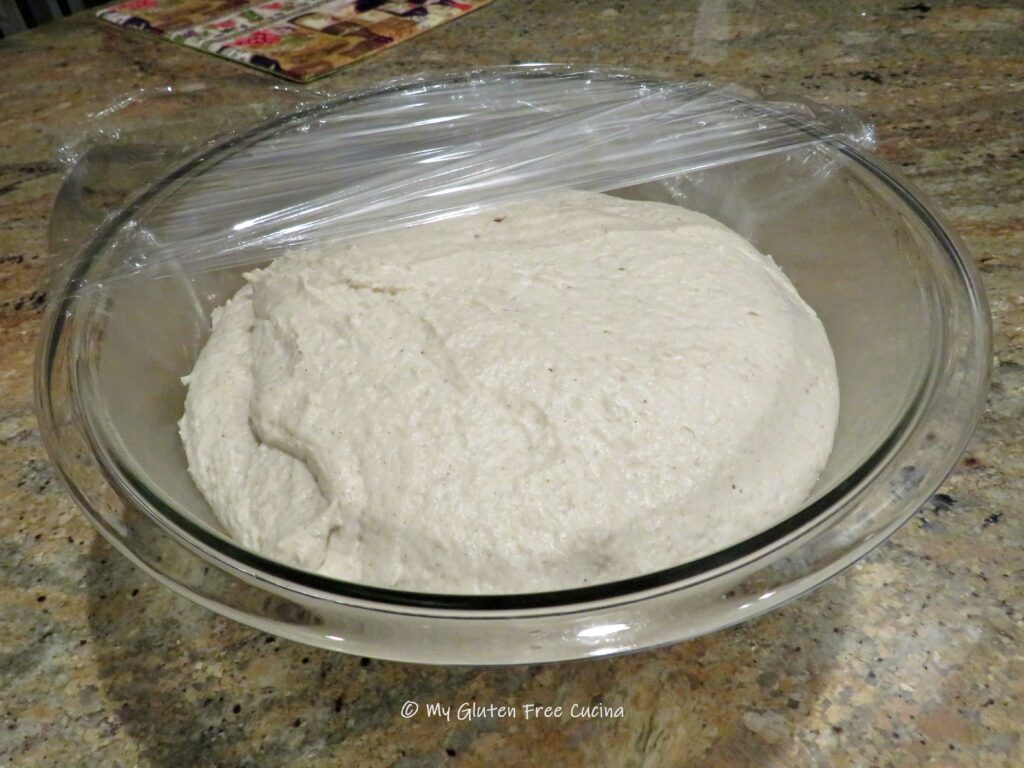
By the next morning, the dough should be puffed up and full of air bubbles. Take the dough out of the refrigerator and let it sit on the counter to warm up a bit before you shape it.

Rub a cutting board with a bit of olive oil and turn the dough out.
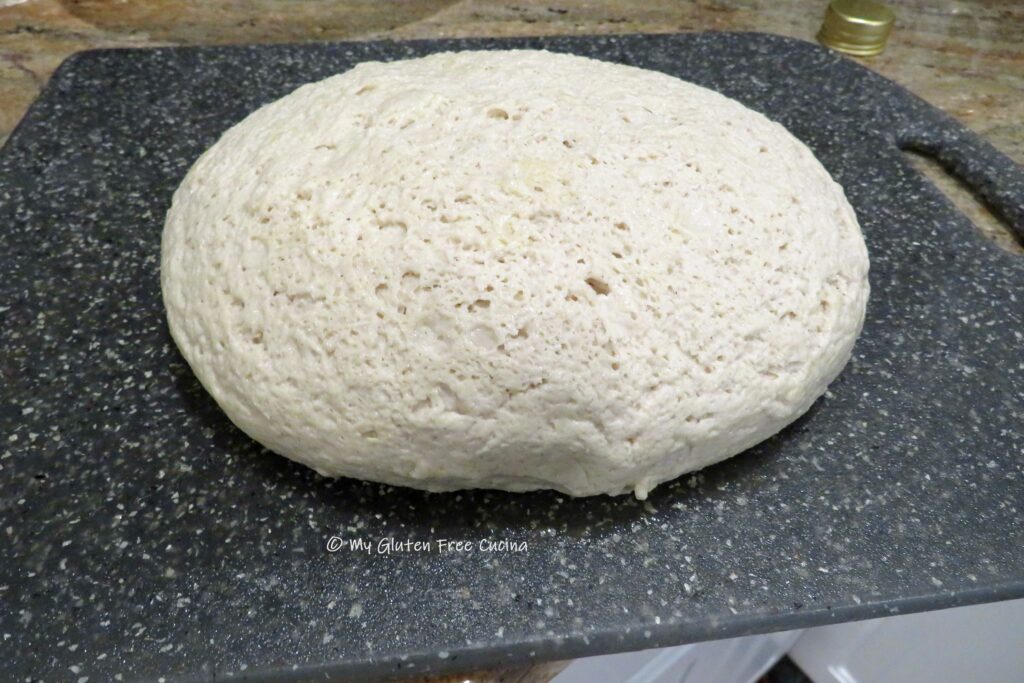 Gently pat the dough into a rectangle, don’t press hard and do not use a rolling pin – you want to keep the air bubbles intact as much as possible.
Gently pat the dough into a rectangle, don’t press hard and do not use a rolling pin – you want to keep the air bubbles intact as much as possible.

Next use a bench knife to do a letter fold, like this.
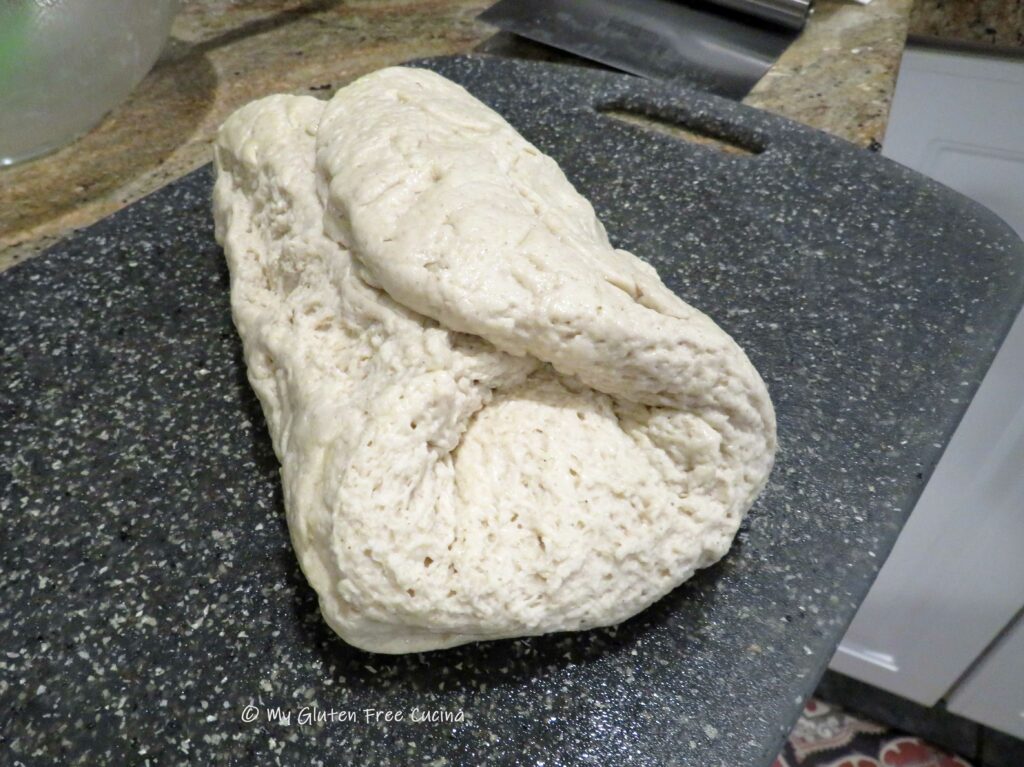
Finally, use oiled hands to gently roll and shape the dough into a loaf. Place it in the loaf pan seam side down, cover with plastic wrap and let it sit at room temperature for 30 minutes. Preheat the oven to 450º.

Just before baking, brush the top of the loaf with 1 tbsp. olive oil and sprinkle with coarse salt. Use a lame or sharp knife to score 3 diagonal slashes across the top about 1/2″ deep.
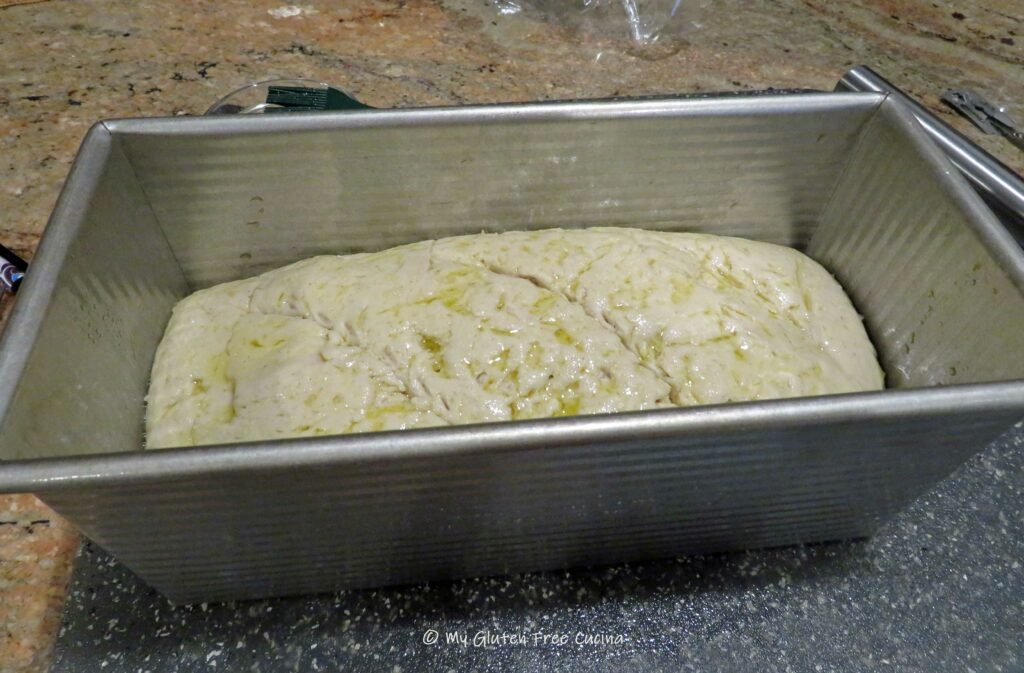
Place the loaf in the oven and immediately throw a few ice cubes onto the bottom of the oven to create steam.
Bake for 55 minutes, or until the internal temperature reaches 210º (use a thermometer!).

Remove the loaf from the pan and let it cool for 8 hours on a rack before slicing. The longer you wait, the better the texture will be. After 8 hours you can place the loaf in a bread bag and store it at room temperature to slice in the morning.
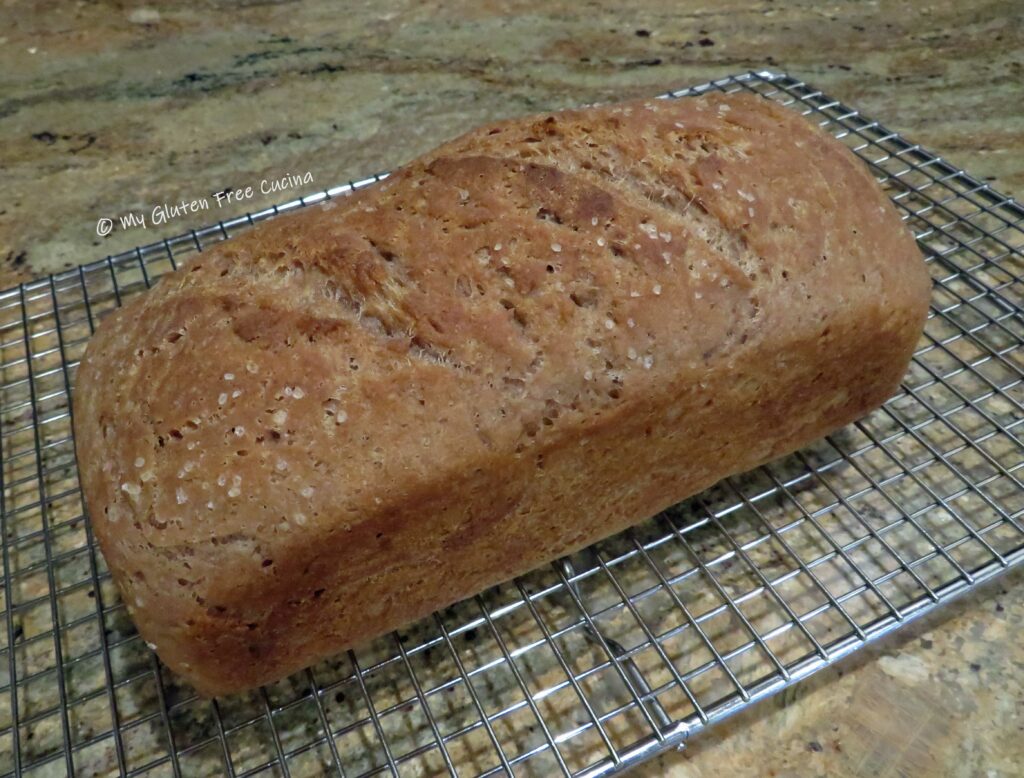
Look at that wide open crumb! Remember when I mentioned that you do not want to deflate the air bubbles when shaping the loaf? Now you know why!
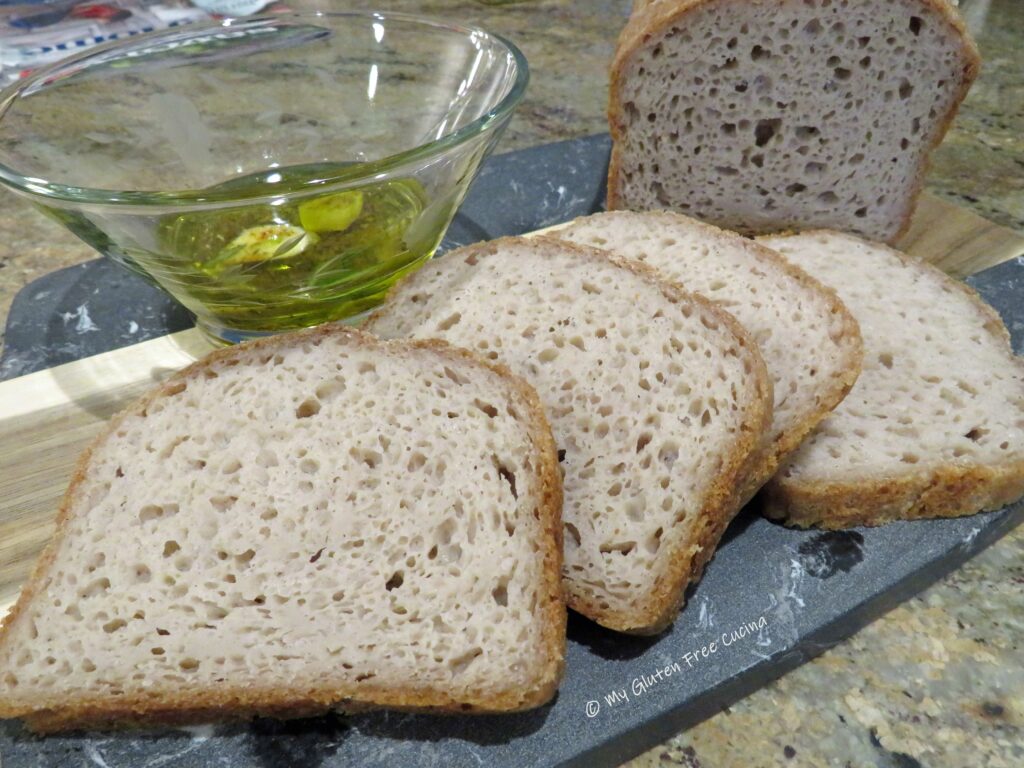
Sometimes it’s really hard not to slice into a loaf of bread as soon as it comes out of the oven, but your patience will be rewarded. I let this loaf cool on a rack for eight hours before cutting a few slices for dinner. I put the rest in a bread bag overnight. I have perfect slices with no gummy texture! Sorry you can’t taste it but take my word it was delicious!
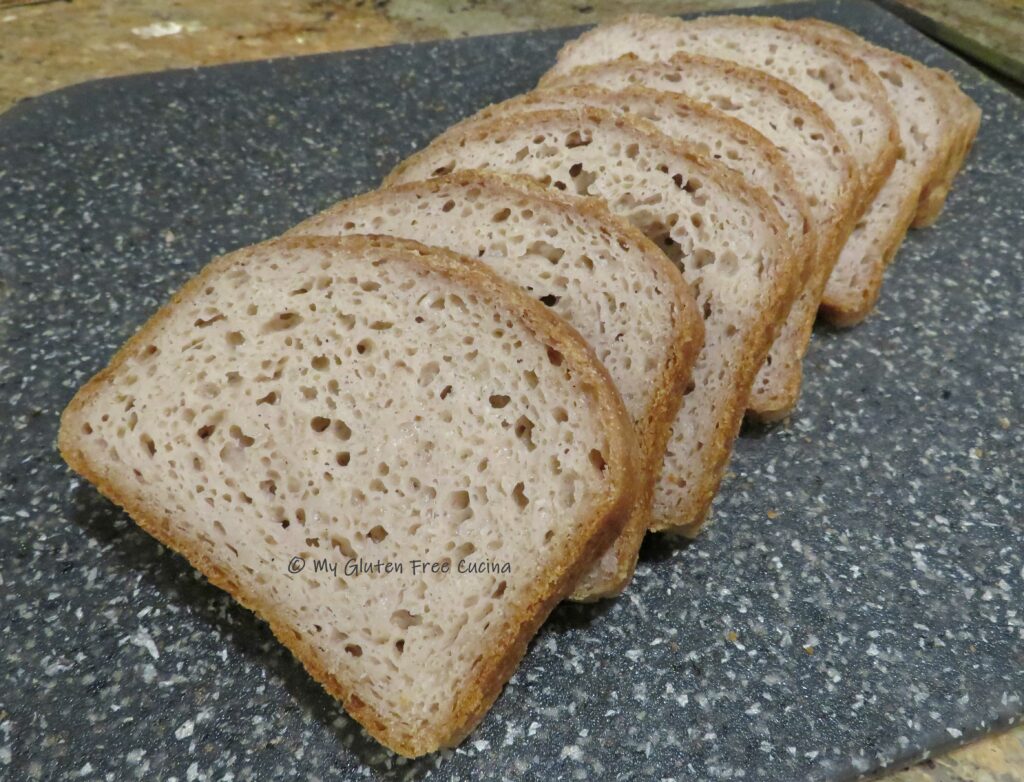
Notes ♪♫ Troubleshooting gluten free bread can be tricky and sourdough even more so. So here are a few hints. If the loaf didn’t rise, it could be that your starter wasn’t fully active. Try feeding more frequently for several days before making the dough. If the bottom or center of the loaf looks gummy, it wasn’t baked long enough (did you check with a thermometer?) or your measurements weren’t accurate (did you weigh your ingredients?). Also, be sure to wait for your bread to cool down and set completely before slicing, it takes at least 8 hours! Feel free to reach out with any questions and I’ll try my best to help!

 Print This Post
Print This Post
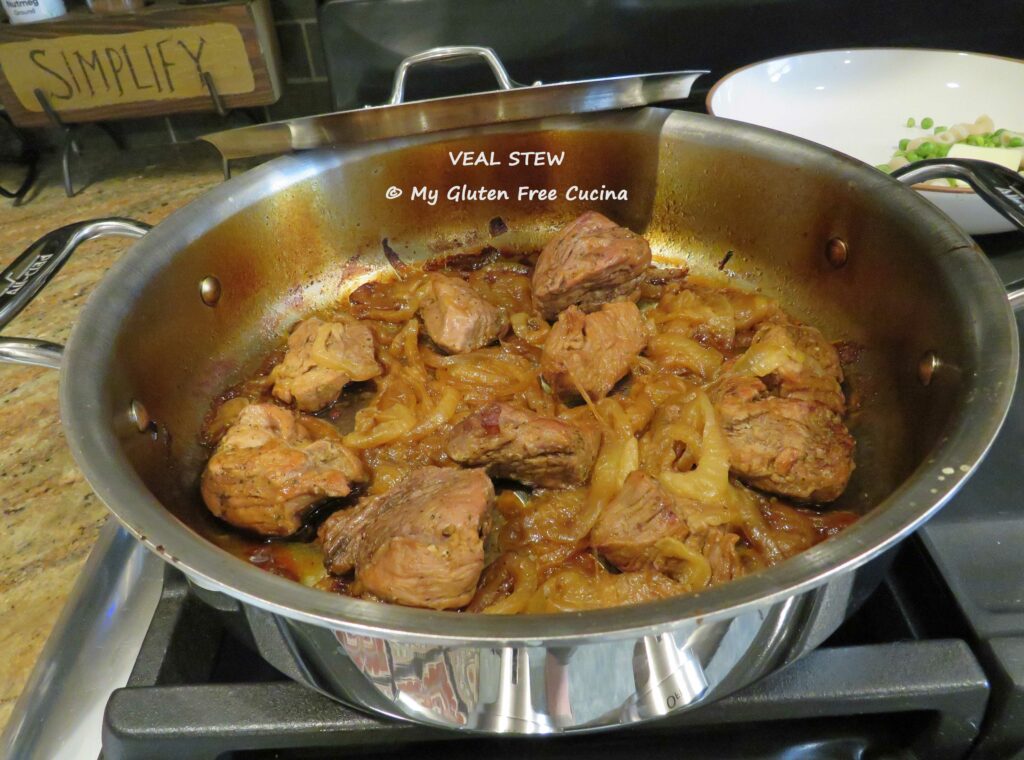
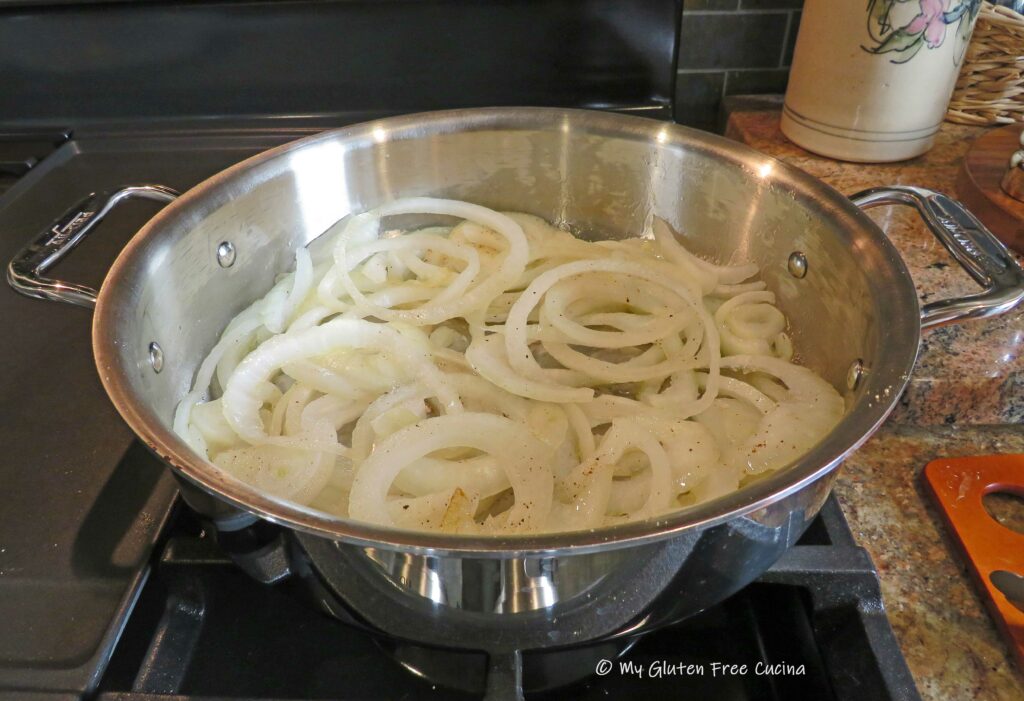
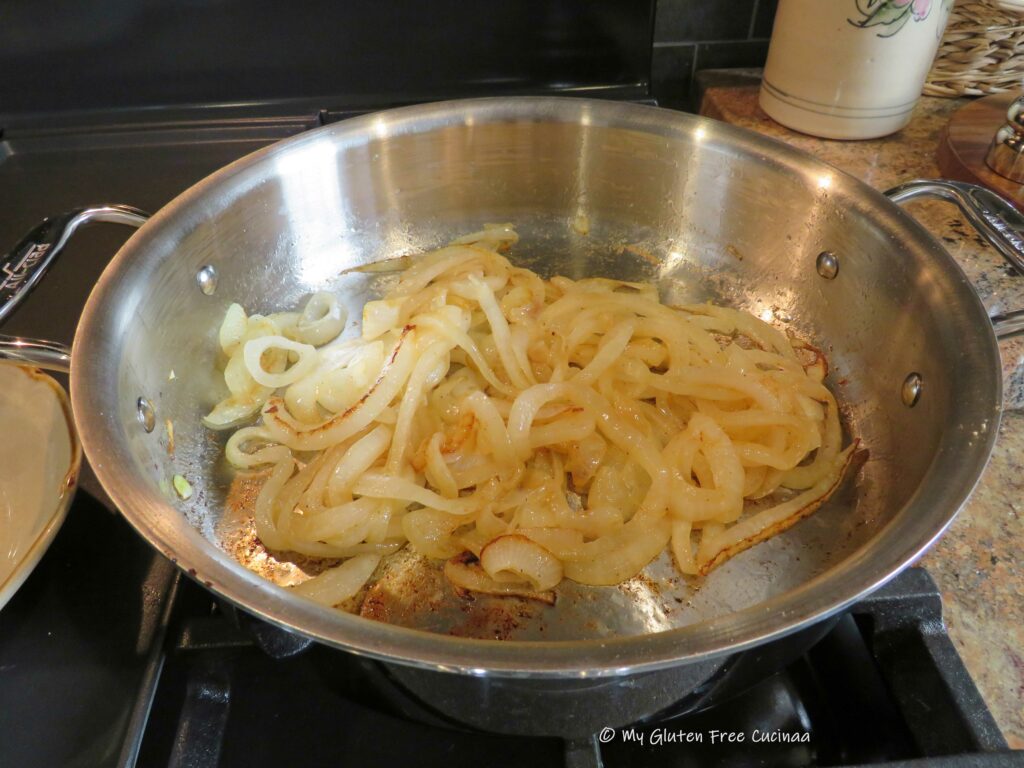 In the same pan, heat the remaining olive oil and butter and begin browning the meat on all sides. Season with salt, pepper and Italian seasoning.
In the same pan, heat the remaining olive oil and butter and begin browning the meat on all sides. Season with salt, pepper and Italian seasoning.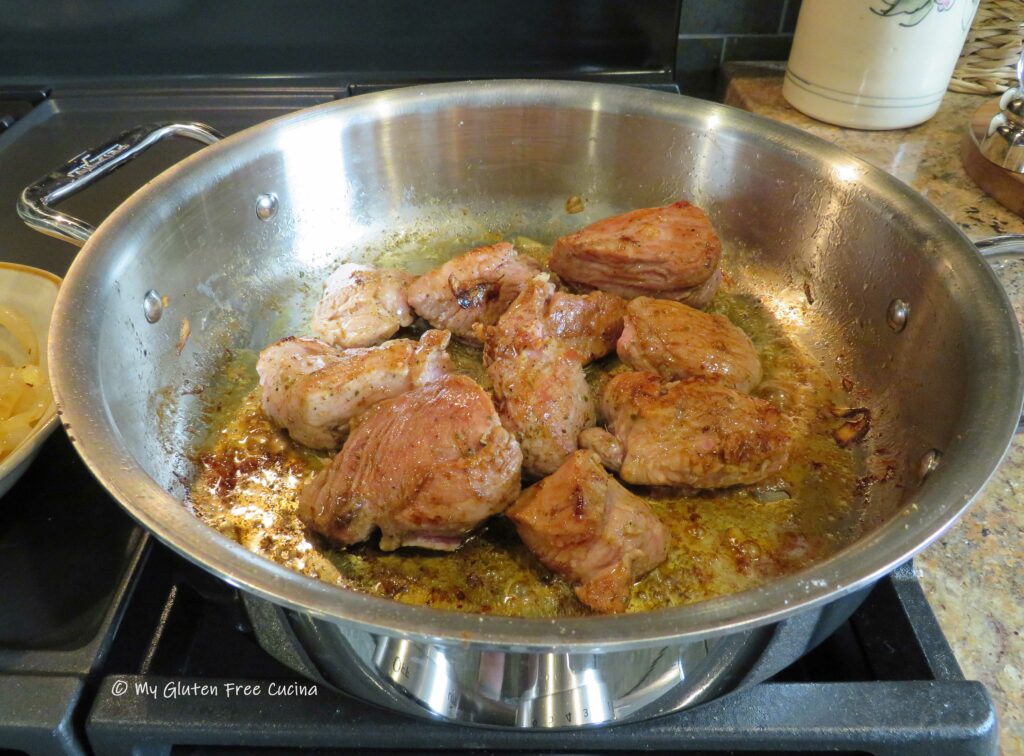
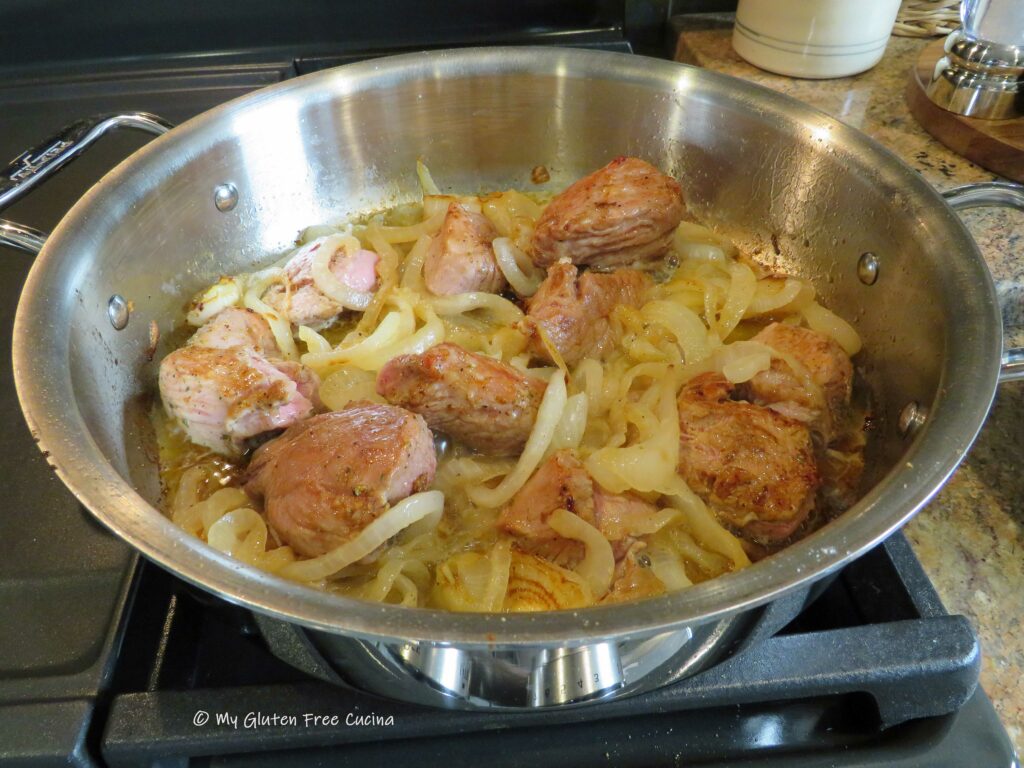





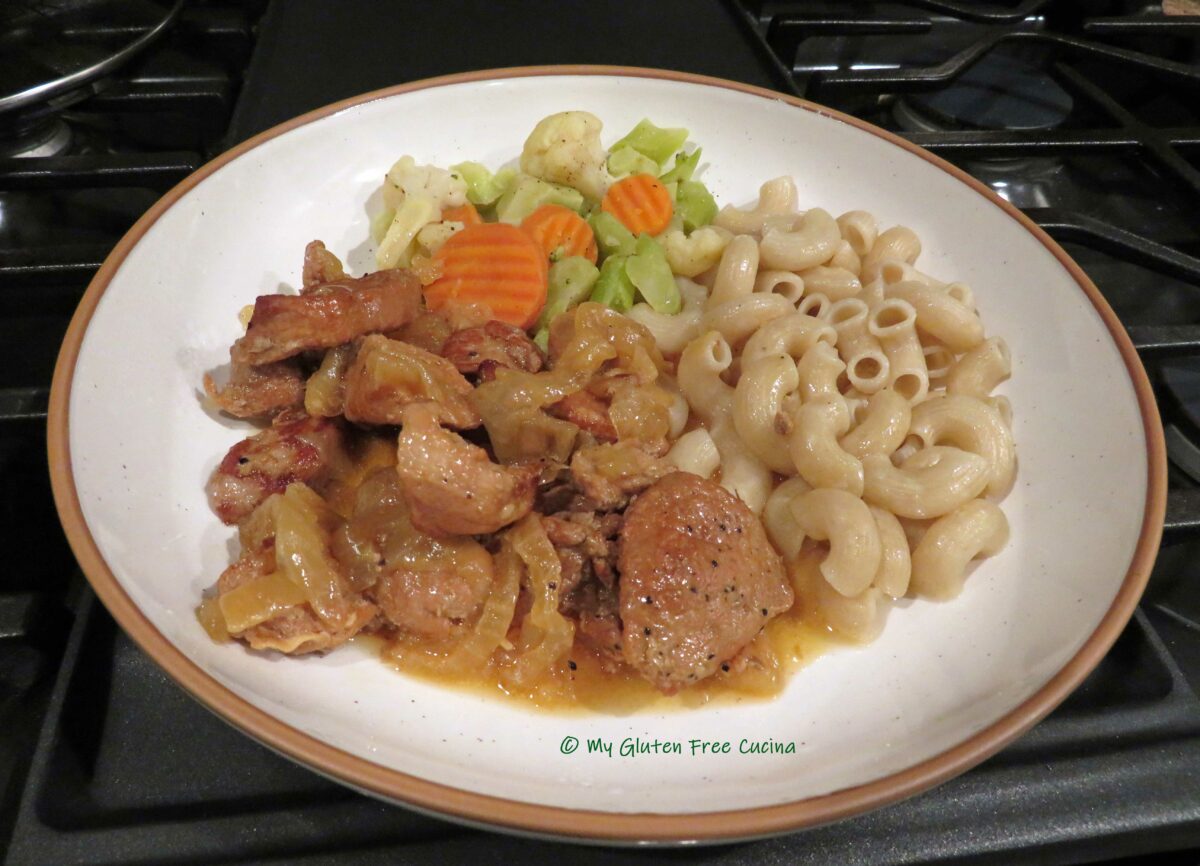



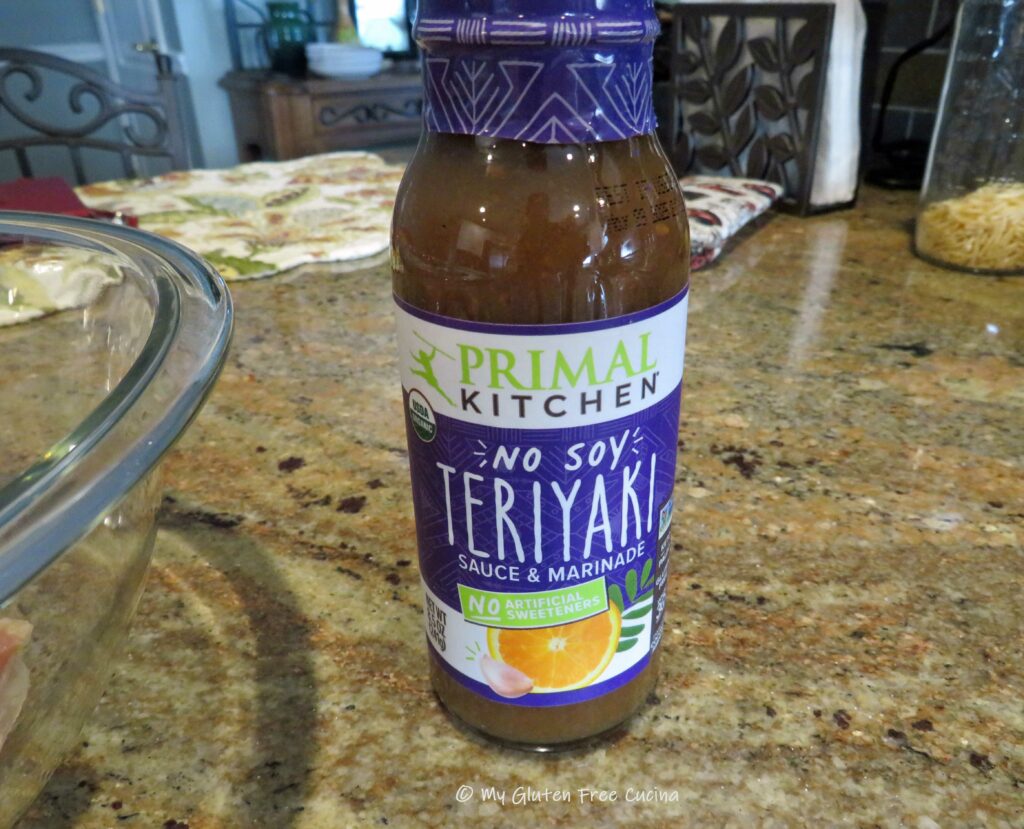

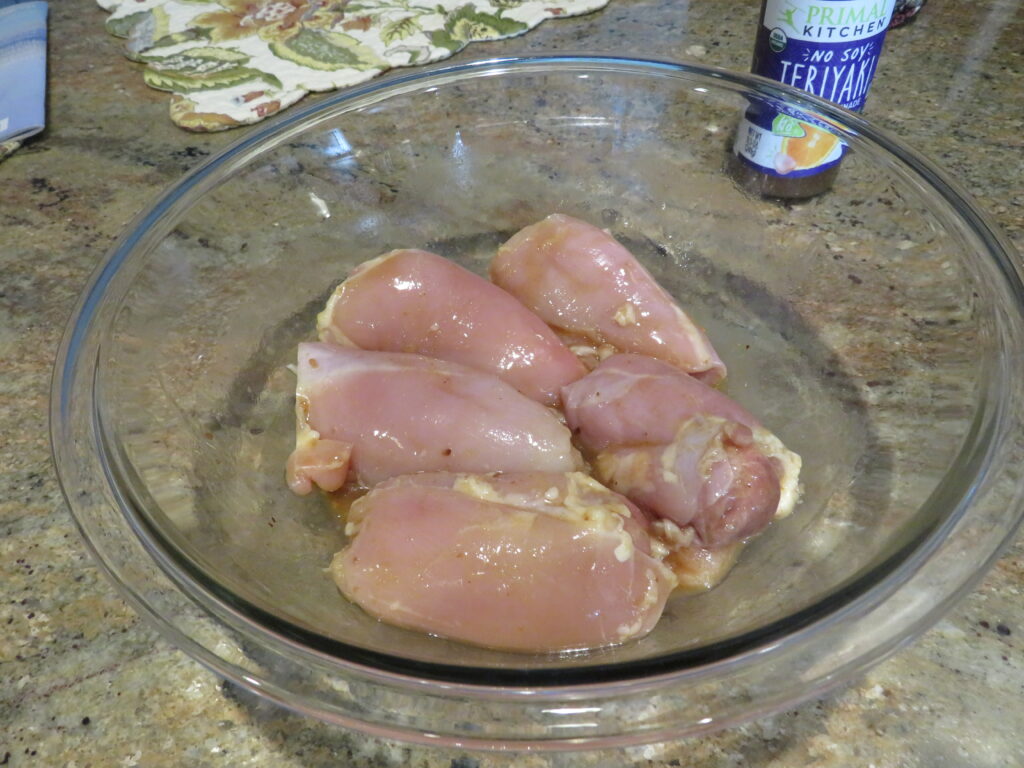
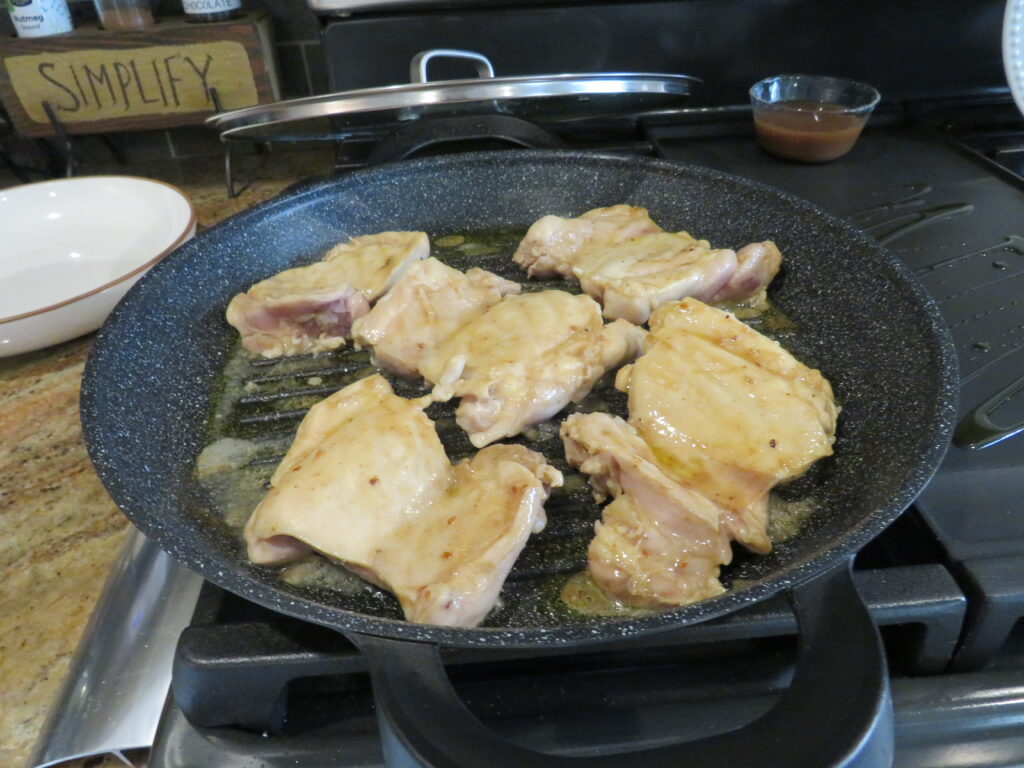


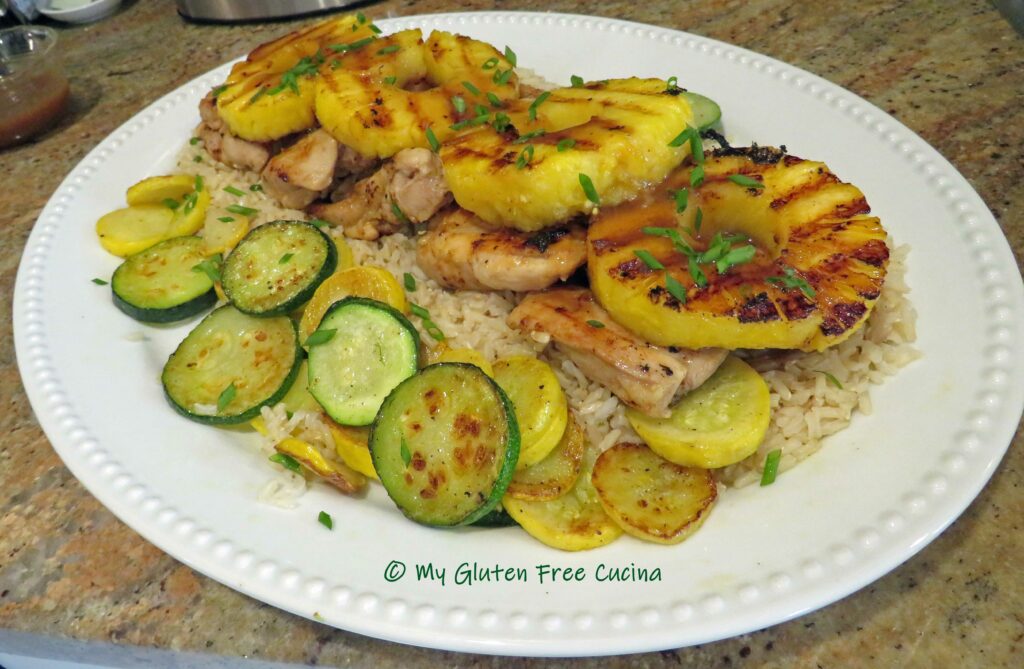
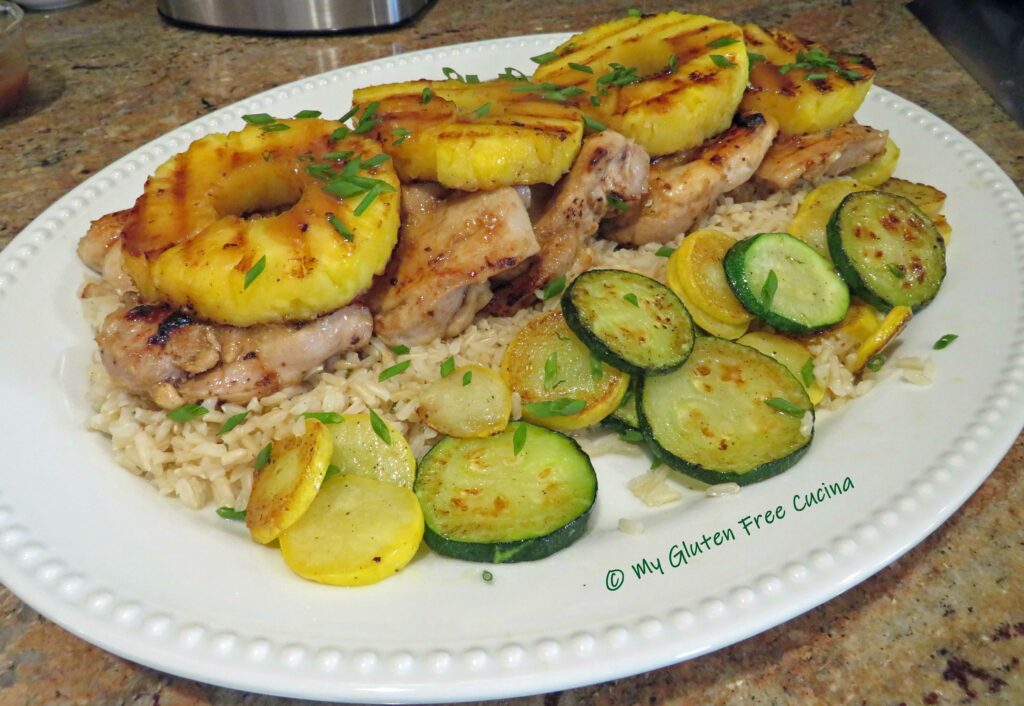









 Gently pat the dough into a rectangle, don’t press hard and do not use a rolling pin – you want to keep the air bubbles intact as much as possible.
Gently pat the dough into a rectangle, don’t press hard and do not use a rolling pin – you want to keep the air bubbles intact as much as possible.










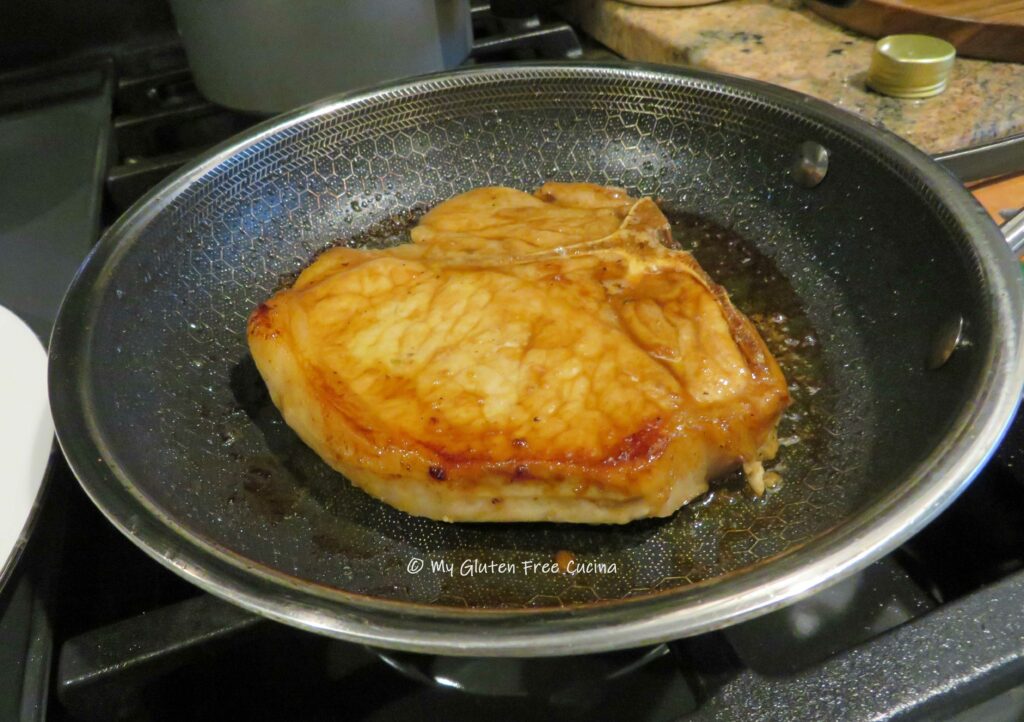
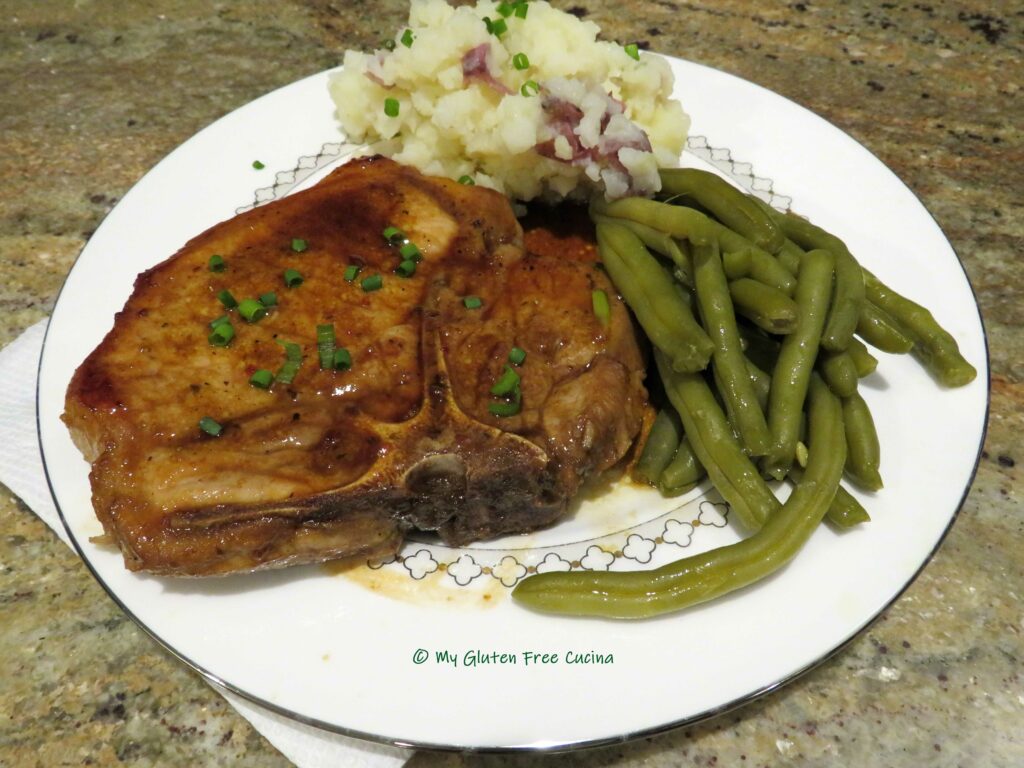
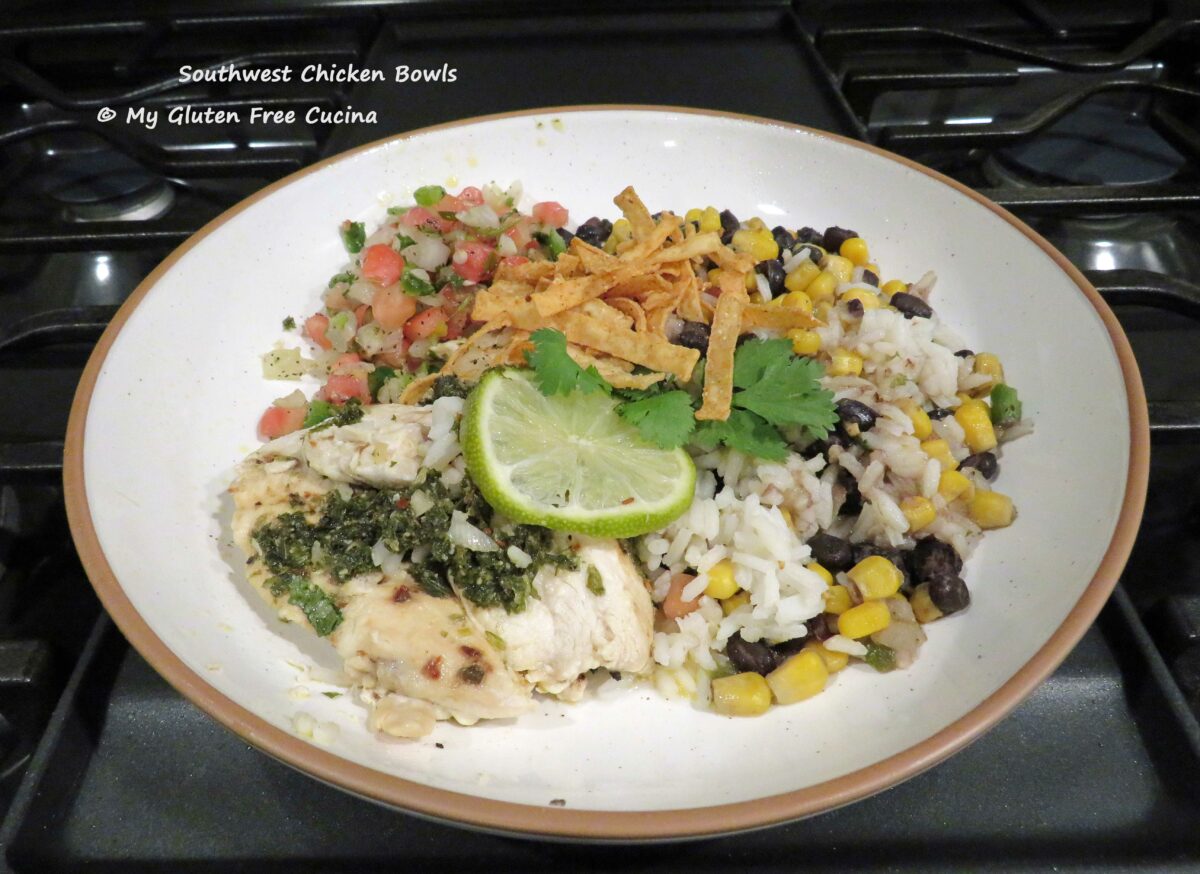


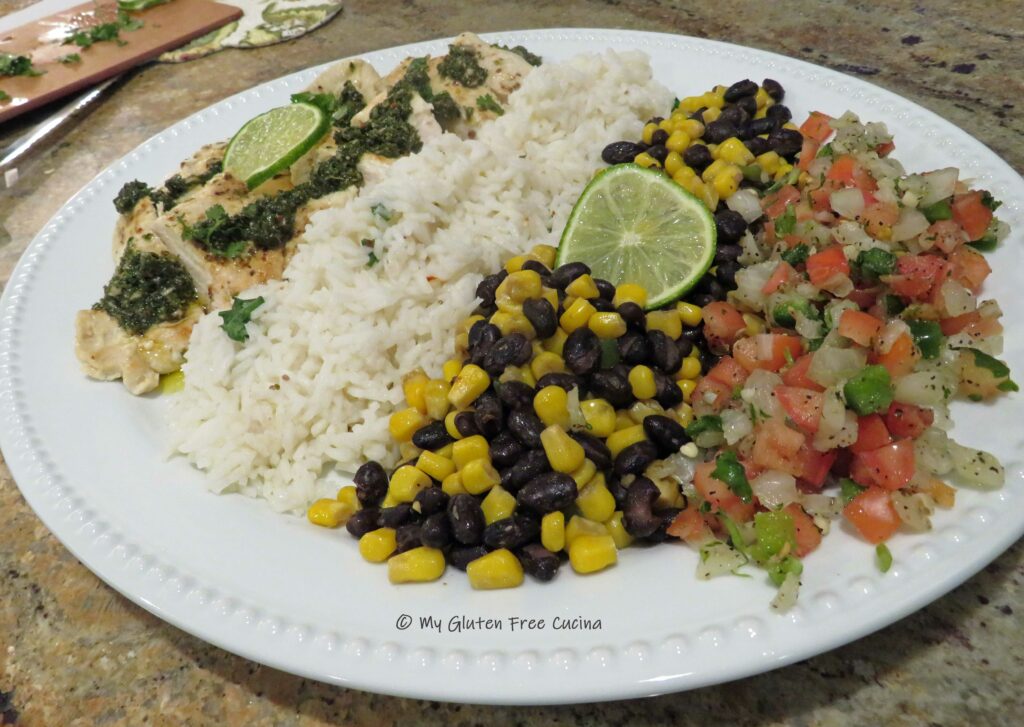
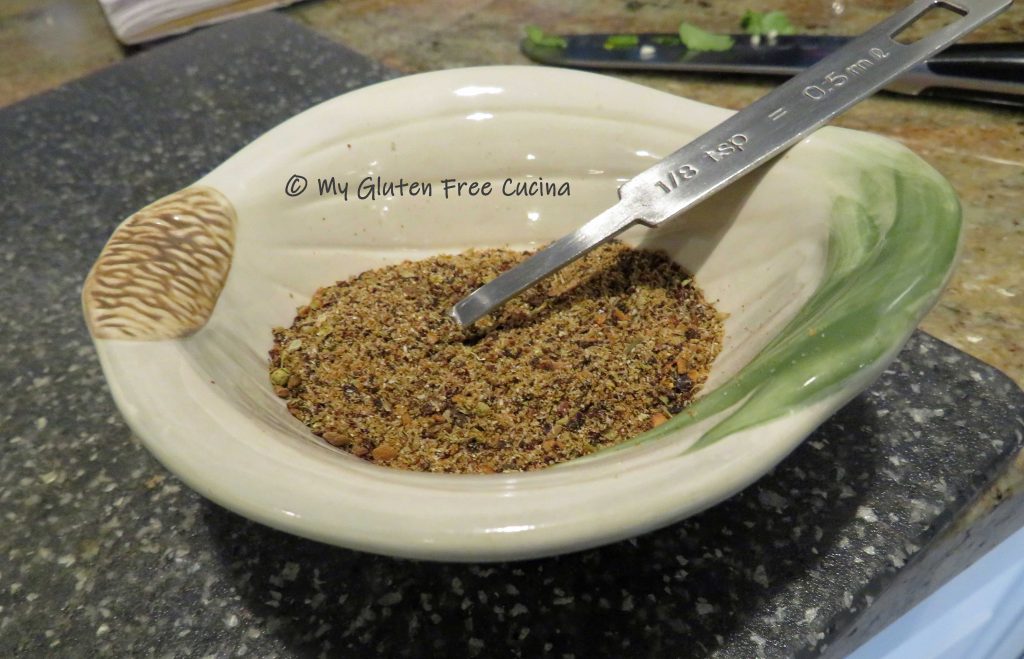
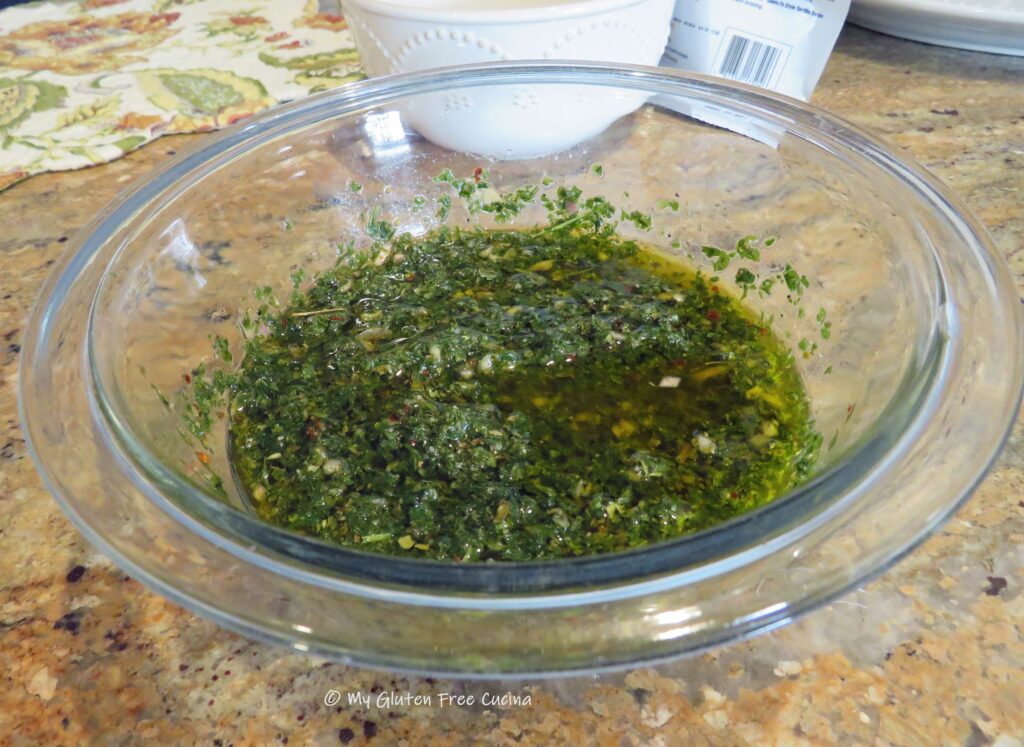
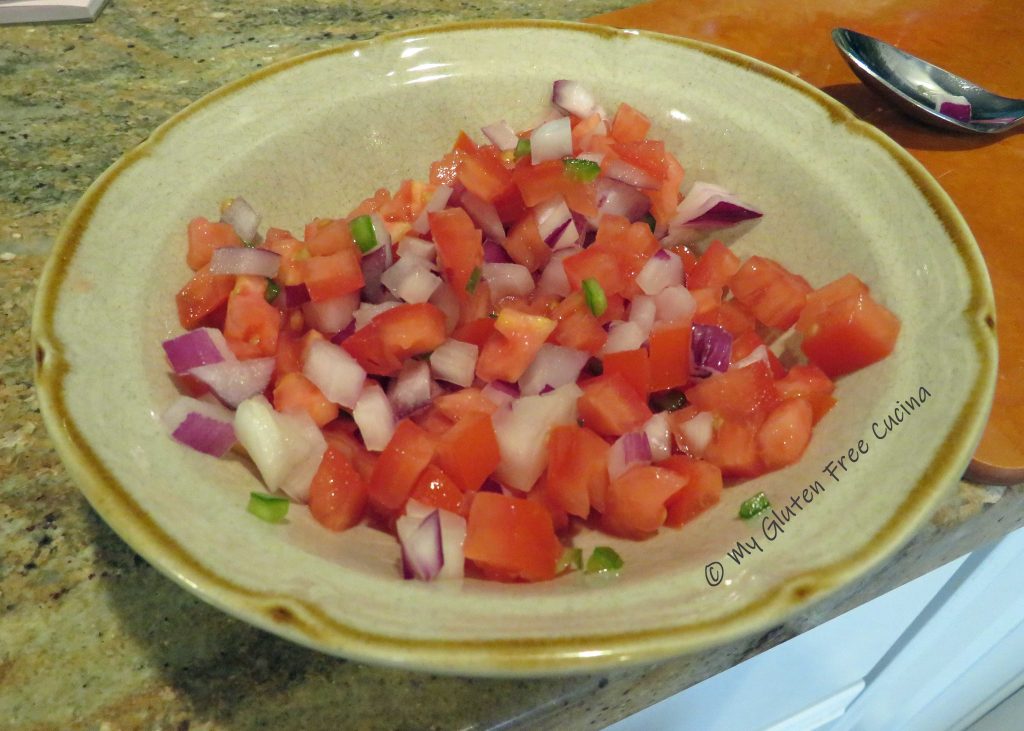
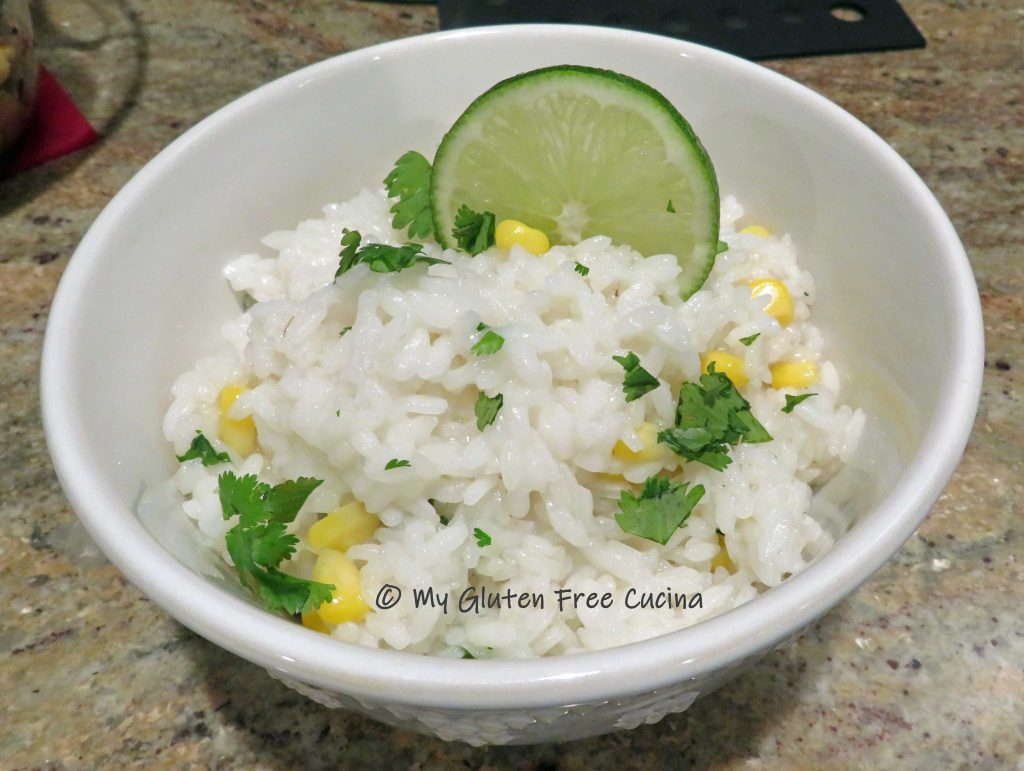
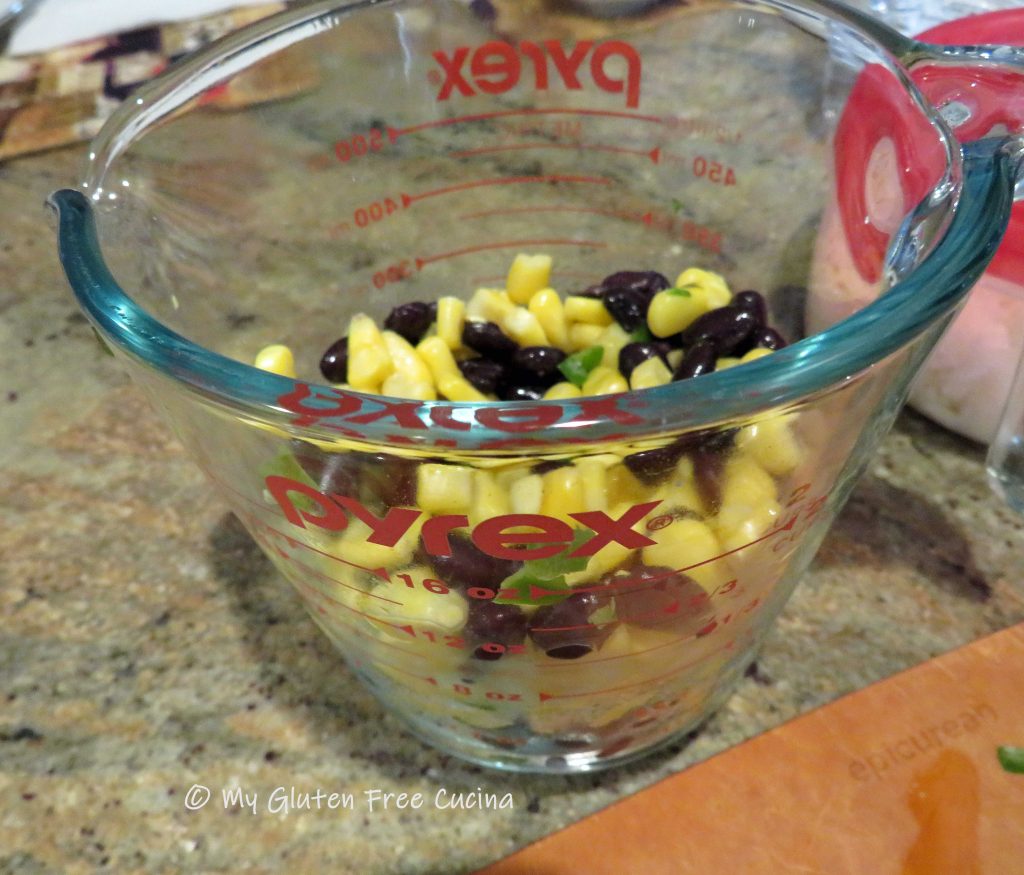






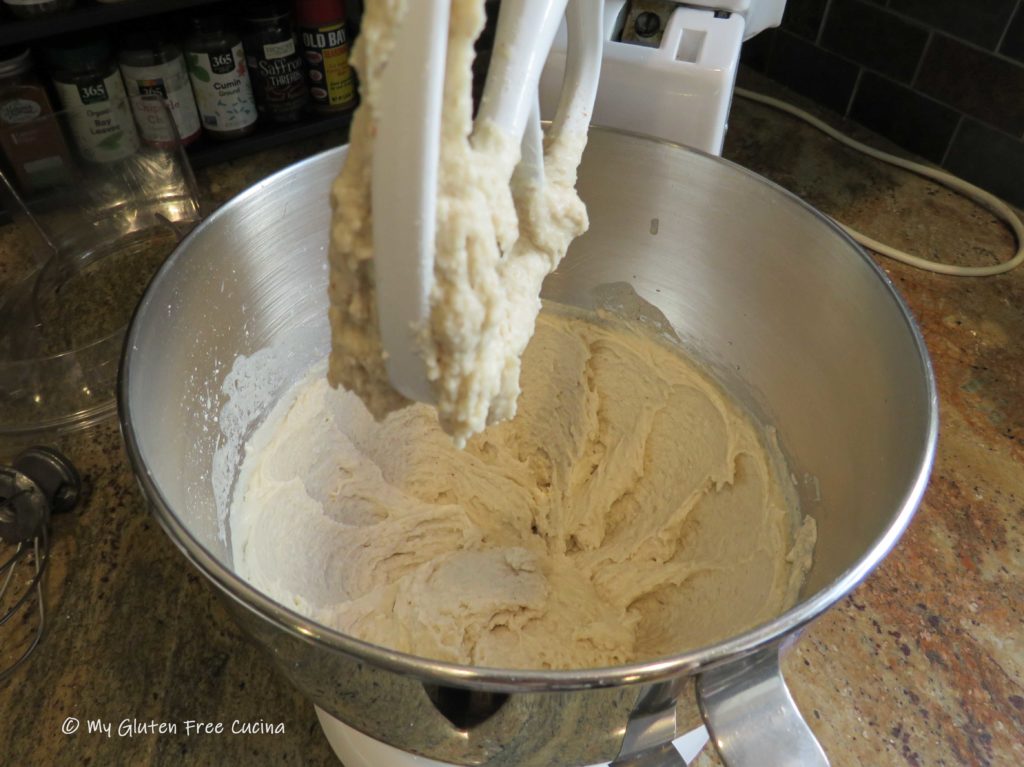








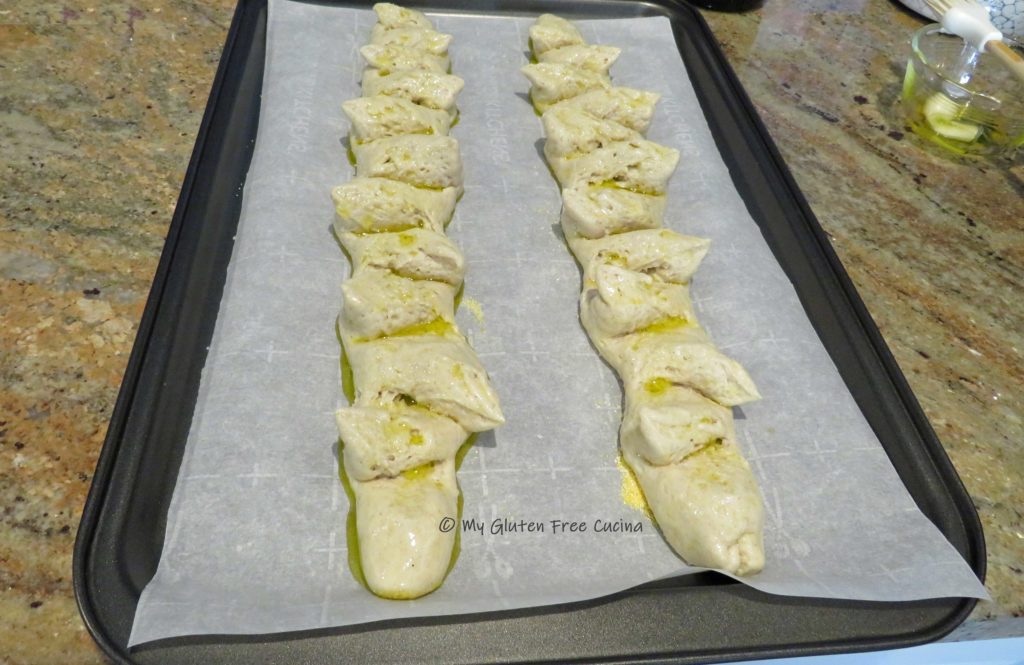
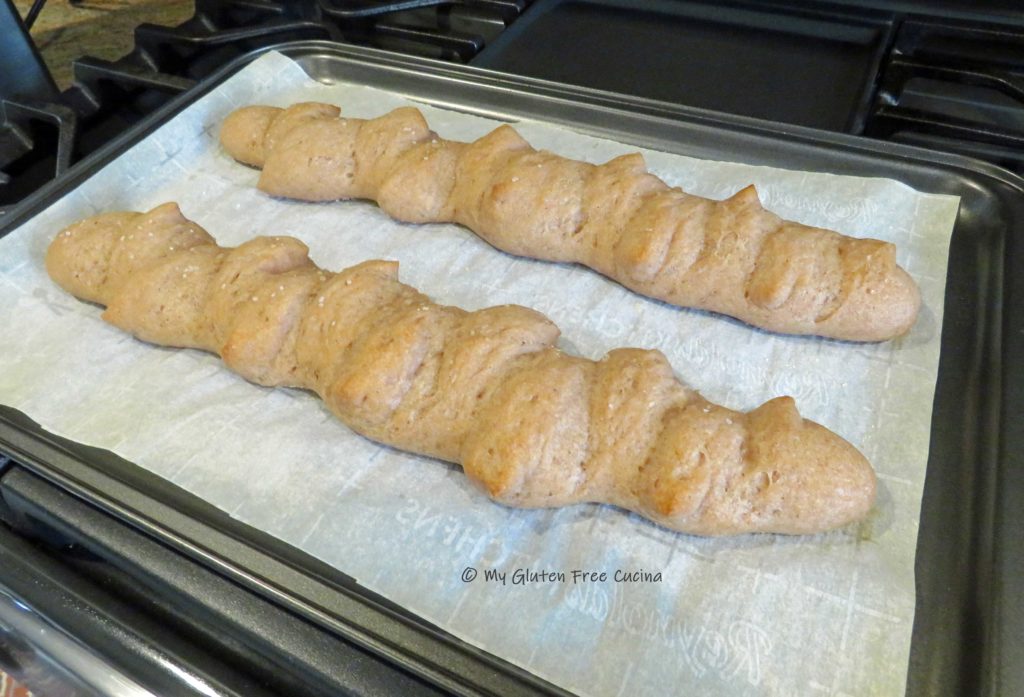

 Notes ♪♫
Notes ♪♫
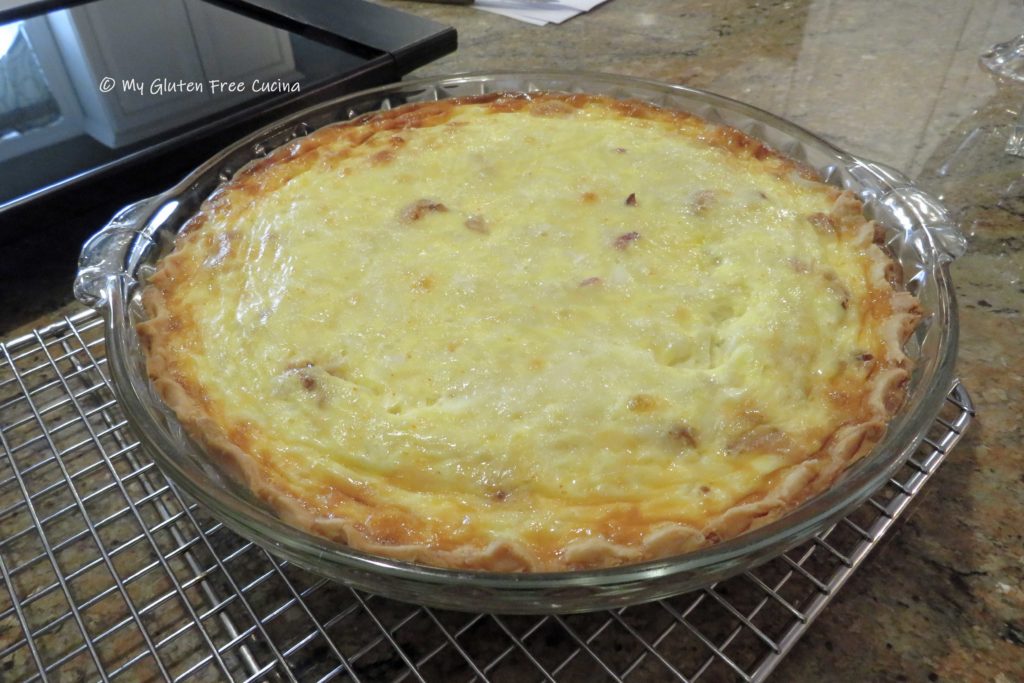

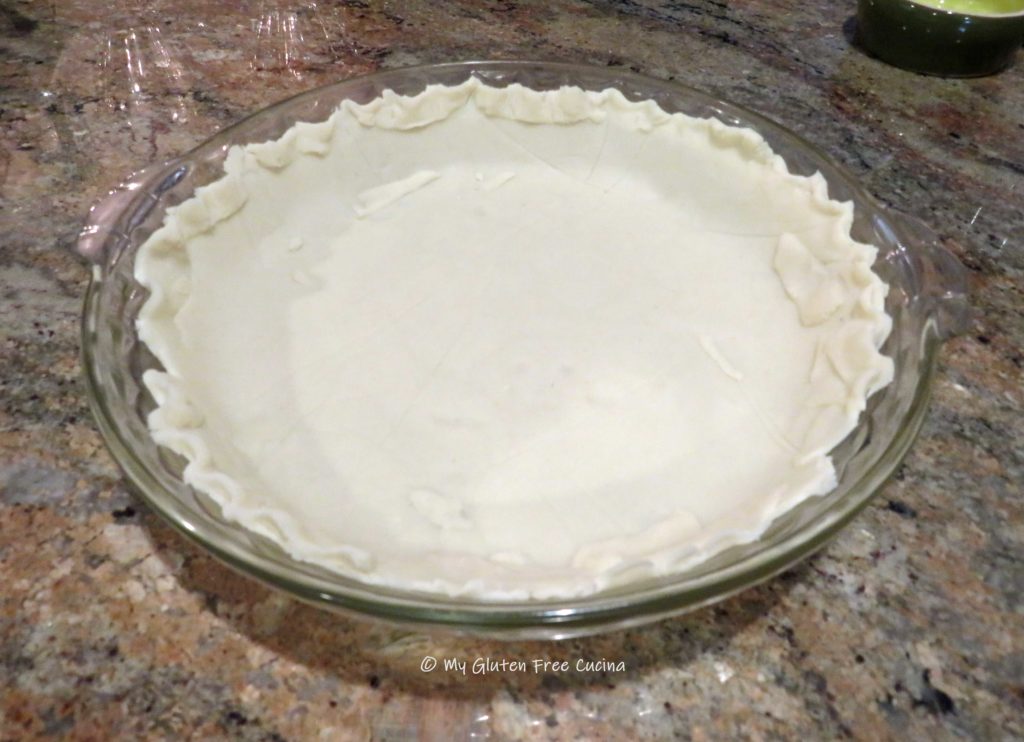
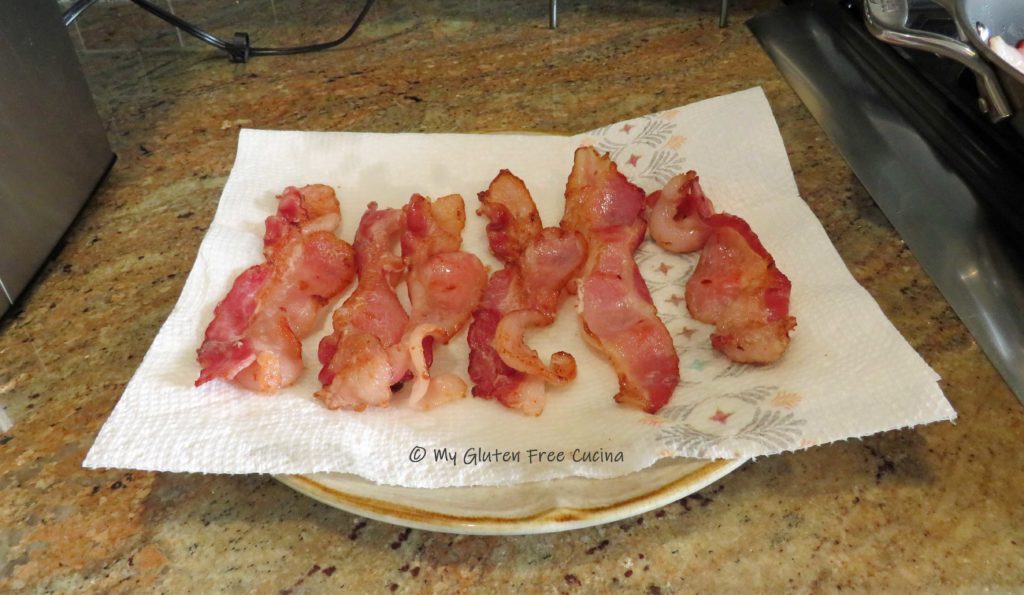
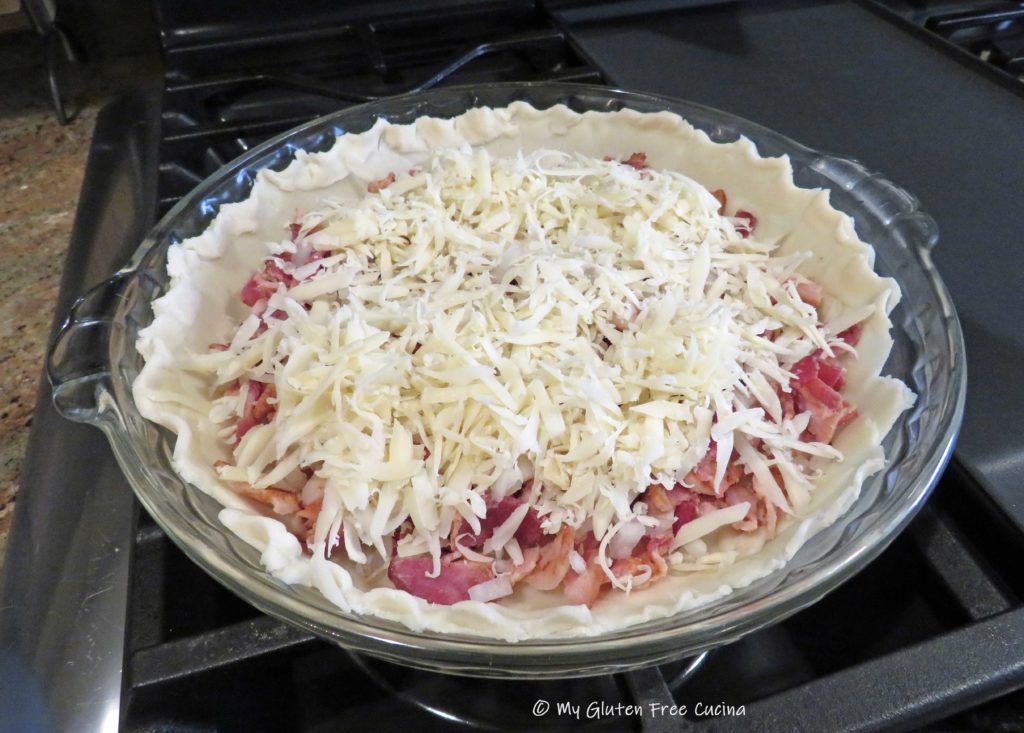

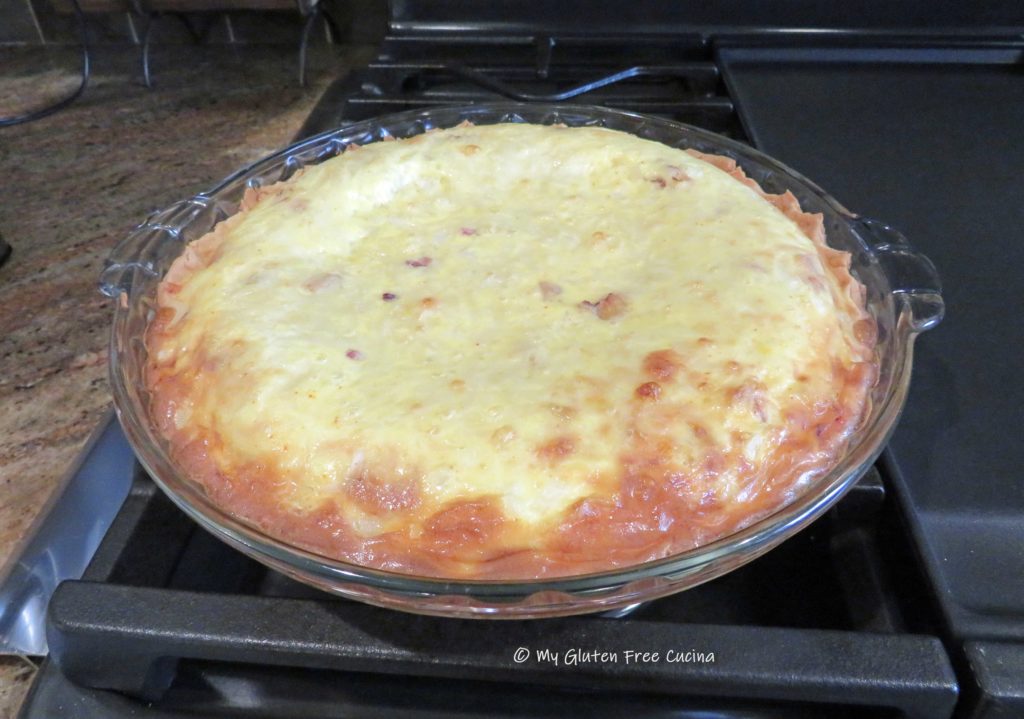

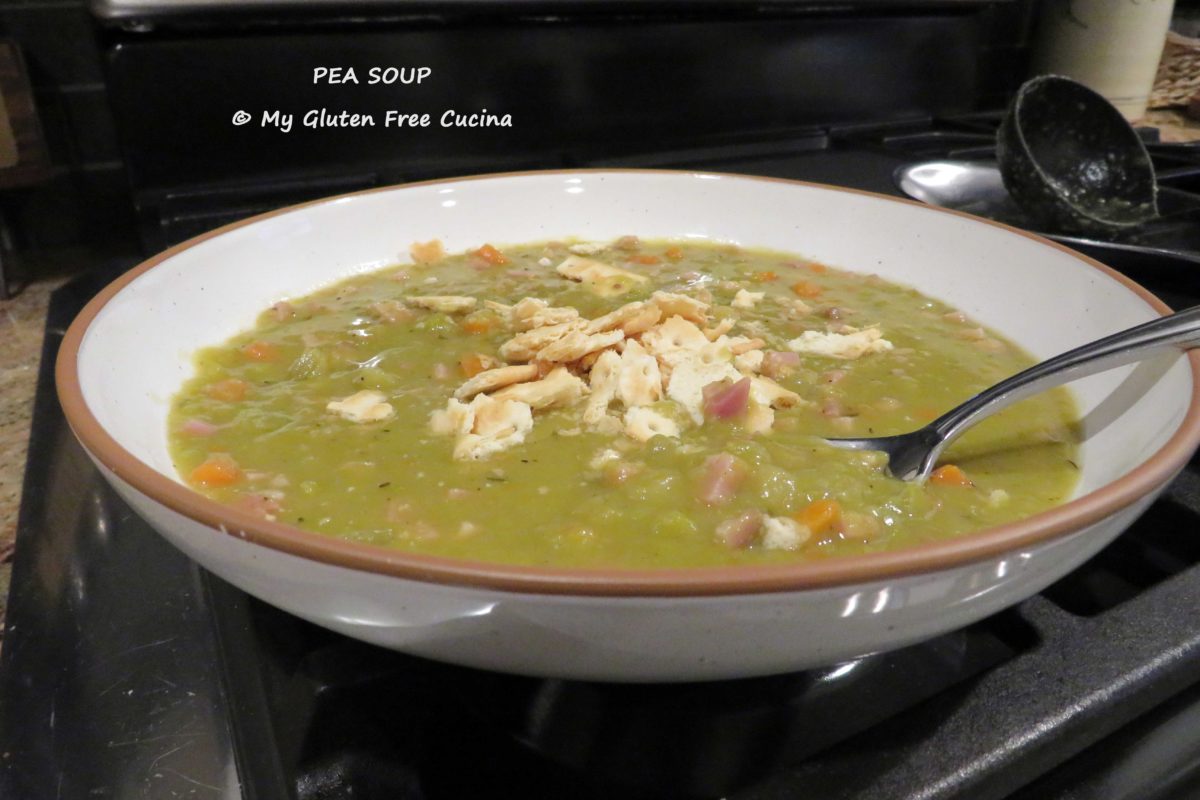

 Season with sage, thyme, salt and pepper. Add 32 oz. of the chicken stock, bay leaves, and bouillon. Simmer 30 minutes.
Season with sage, thyme, salt and pepper. Add 32 oz. of the chicken stock, bay leaves, and bouillon. Simmer 30 minutes.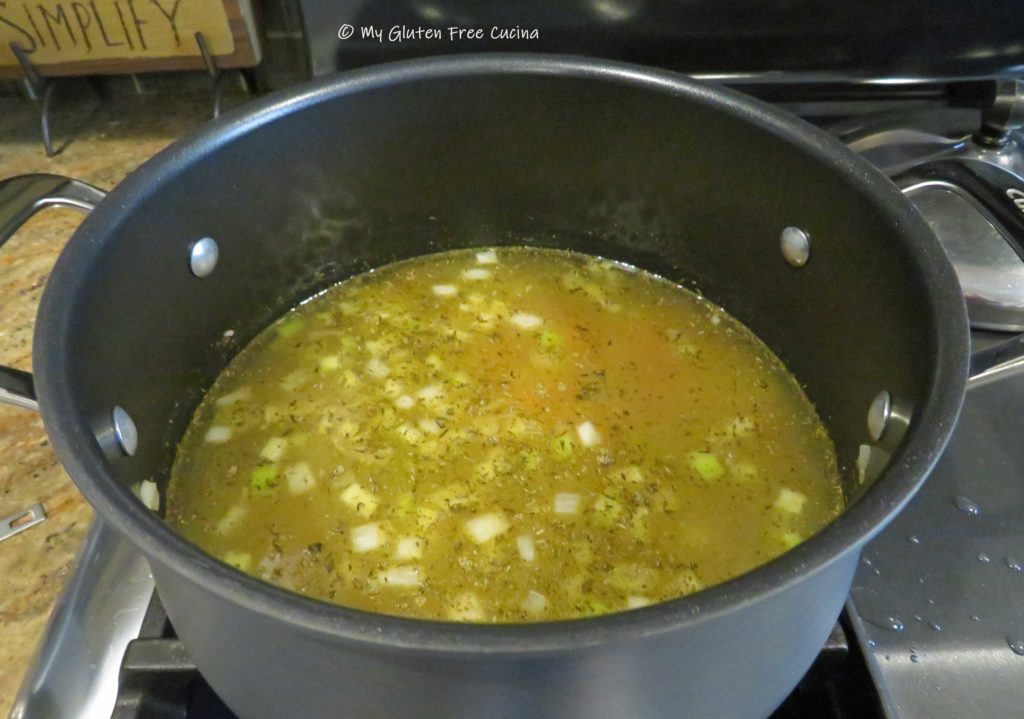 Drain and rinse the peas again. Add them to the pot, stir well and continue cooking for another 45 minutes to an hour, or until the peas are tender.
Drain and rinse the peas again. Add them to the pot, stir well and continue cooking for another 45 minutes to an hour, or until the peas are tender. As they simmer, the peas will absorb quite a bit of liquid, so add more chicken broth as needed.
As they simmer, the peas will absorb quite a bit of liquid, so add more chicken broth as needed.